Contents
Hoa Lo Prison | Introduction
Hoa Lo Prison (Hoa Lo Prison is one of the most famous attractions and important historical sites in the French Quarter of Hanoi. For the Vietnamese people, Hoa Lo Prison symbolizes the spirit of resistance against colonialism and imperialism. Originally built by the French colonial government at the end of the 19th century, in 1896, it was used to detain Vietnamese political prisoners fighting for independence. During the Vietnam War, the North Vietnamese government used this prison to hold American POWs, many American pilots were imprisoned here, and it was also known as the "Hanoi Hilton" at the time.
One-day tour including Hoa Lo Prison
🧳 A full travel resource kit for this topic is currently in the works.
It will include itinerary plans, recommended stays, custom maps, and useful tips.
Hoa Lo Prison | Highlights
Construction of Hoa Lo Prison
Today, Hoa Lo Prison has been transformed into a museum, displaying the history of the prison and the stories from the eras of war and revolution. The prison is surrounded by four-meter-high walls, indicating the strict security measures of the past. On the main gate of the prison, the French colonial signboard is still preserved, bearing the inscription "Central Prison".
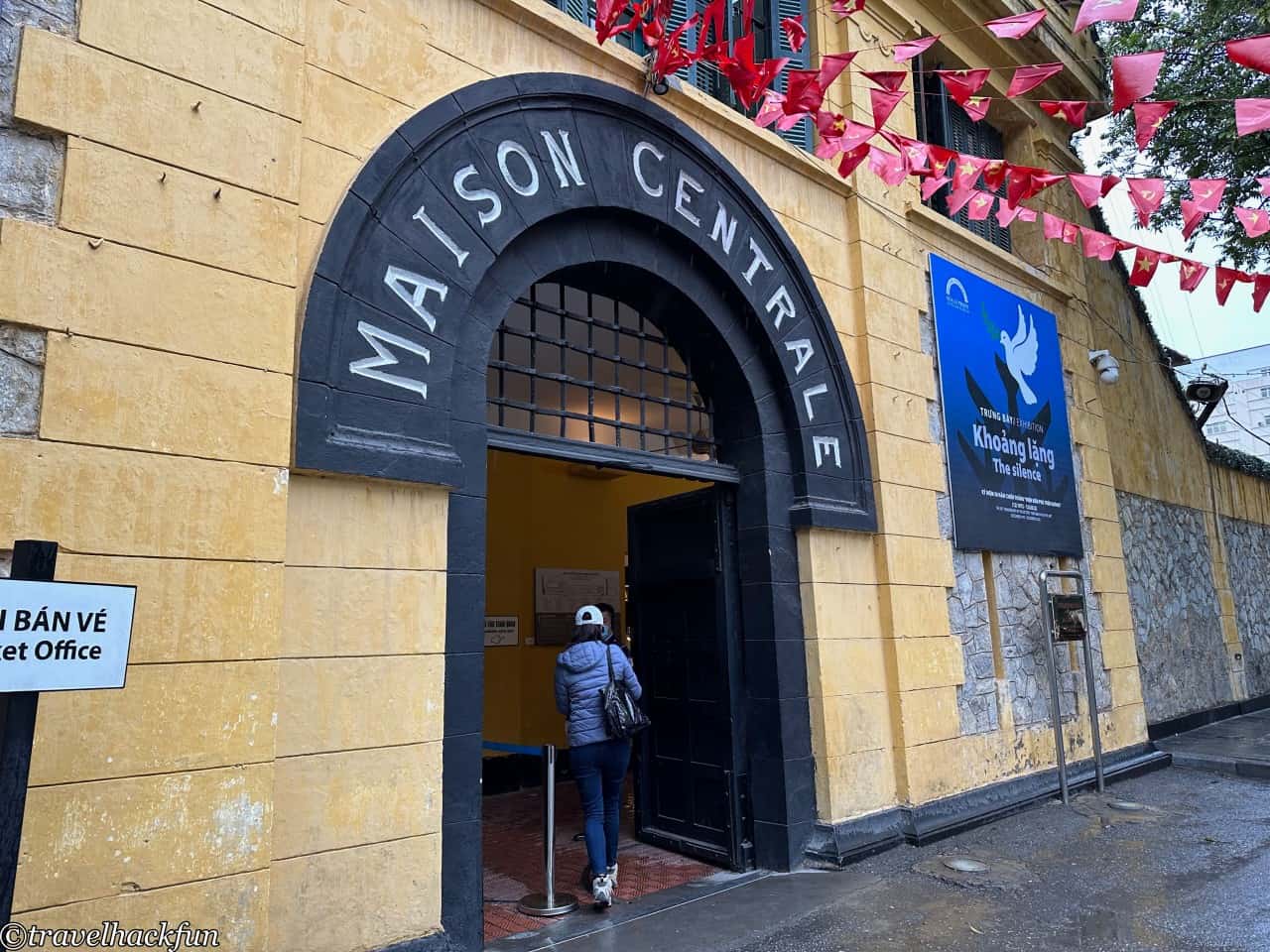
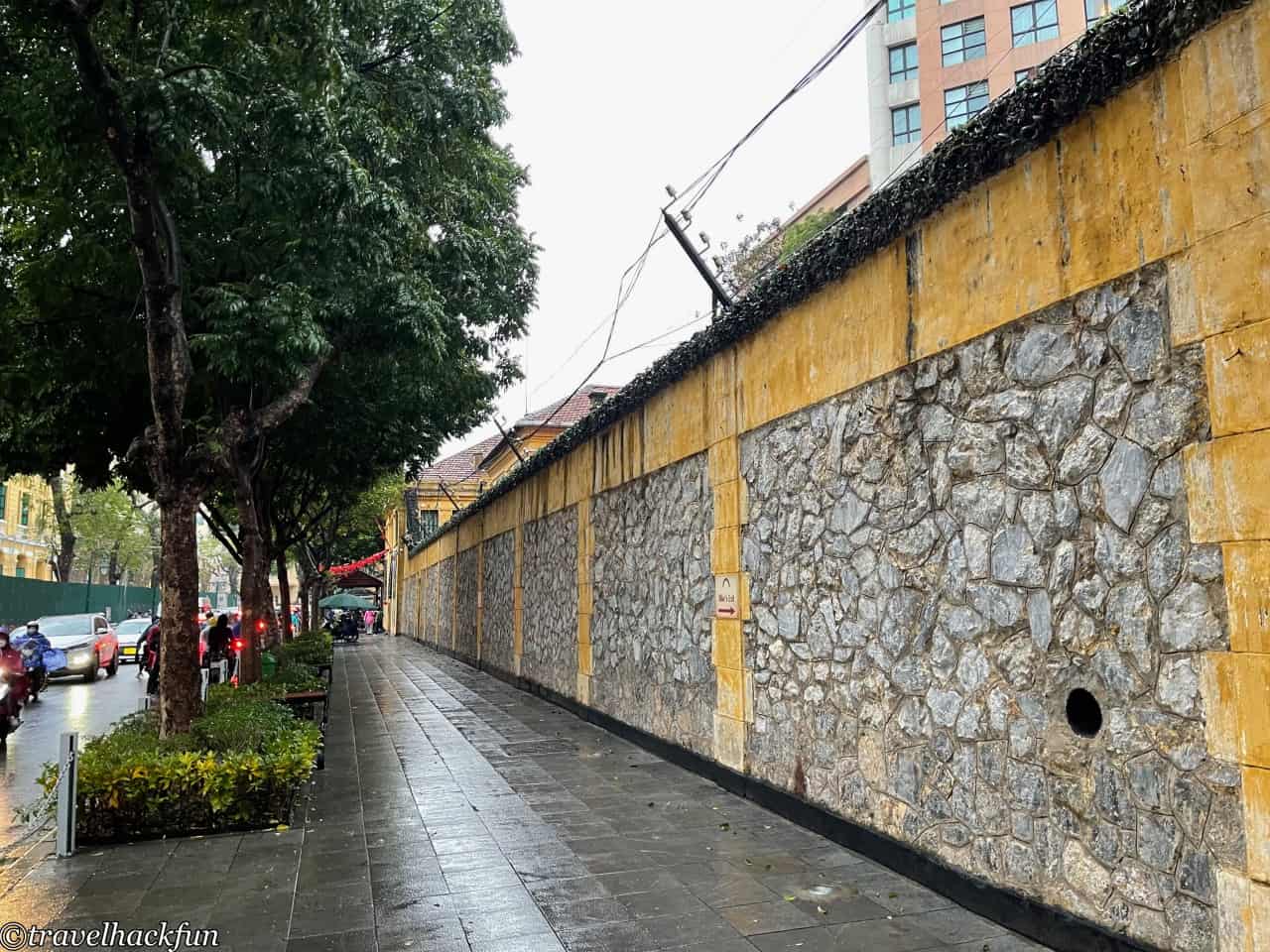
The location of Hoa Lo Prison was originally a handicraft village known in Vietnamese as Phu Khanh Village, which specialized in making teapots, stoves, and other household items. Hence, the name of the place was "Furnace Village" (Hoa Lo Village). Later, the land of the village was expropriated by the French to be transformed into a prison, the handicraft village disappeared, and the prison that replaced it came to be known as Hoa Lo Prison.
Upon entering Hoa Lo Prison, visitors are met with a series of static displays. The French had considerable requirements for the construction of this prison, including strict demands for building materials to be shipped from France. The construction of the prison cost 33,000 French Francs. However, the construction of the prison was not fully completed because it was put into use directly due to the need to detain many prisoners.
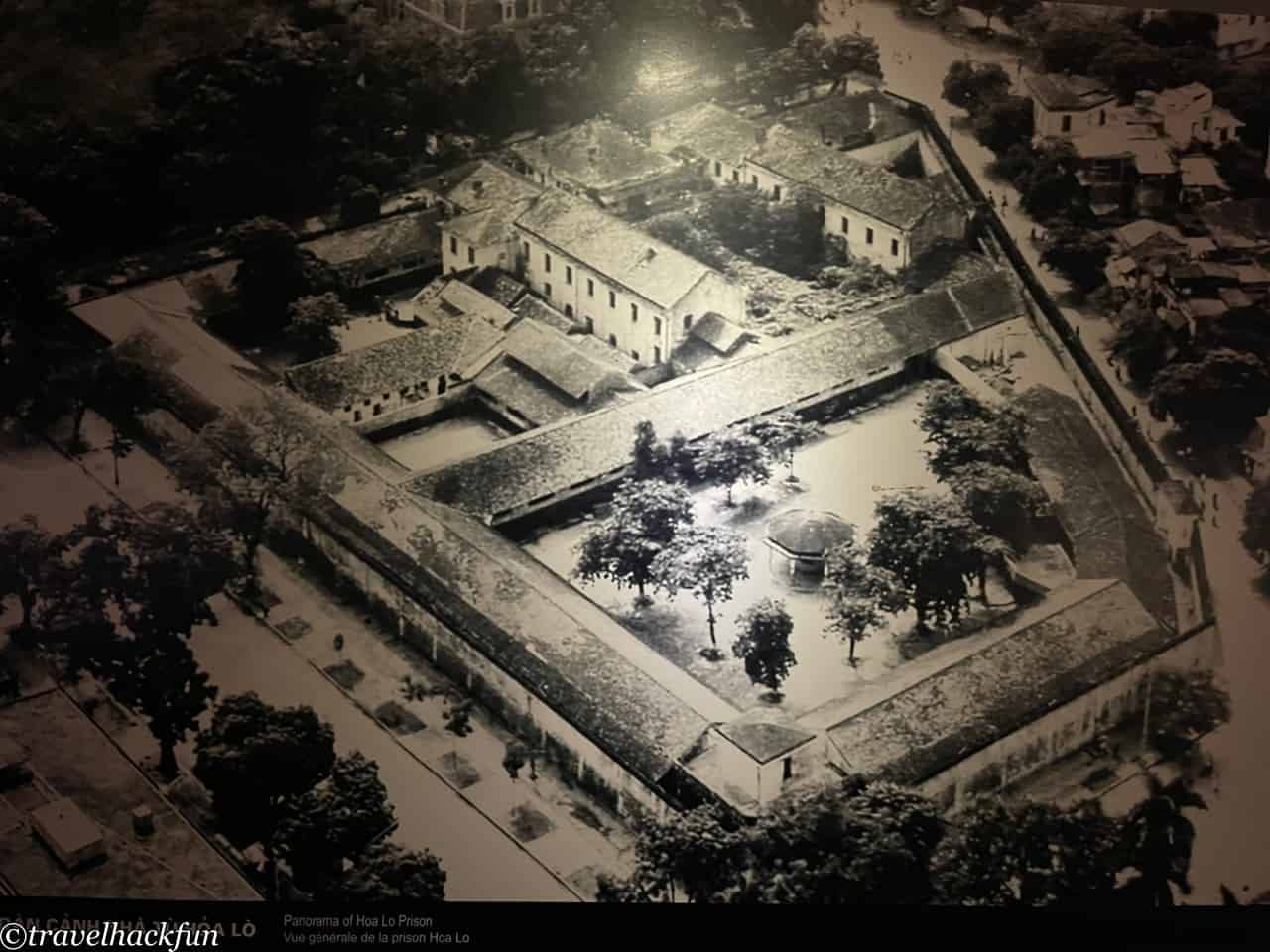
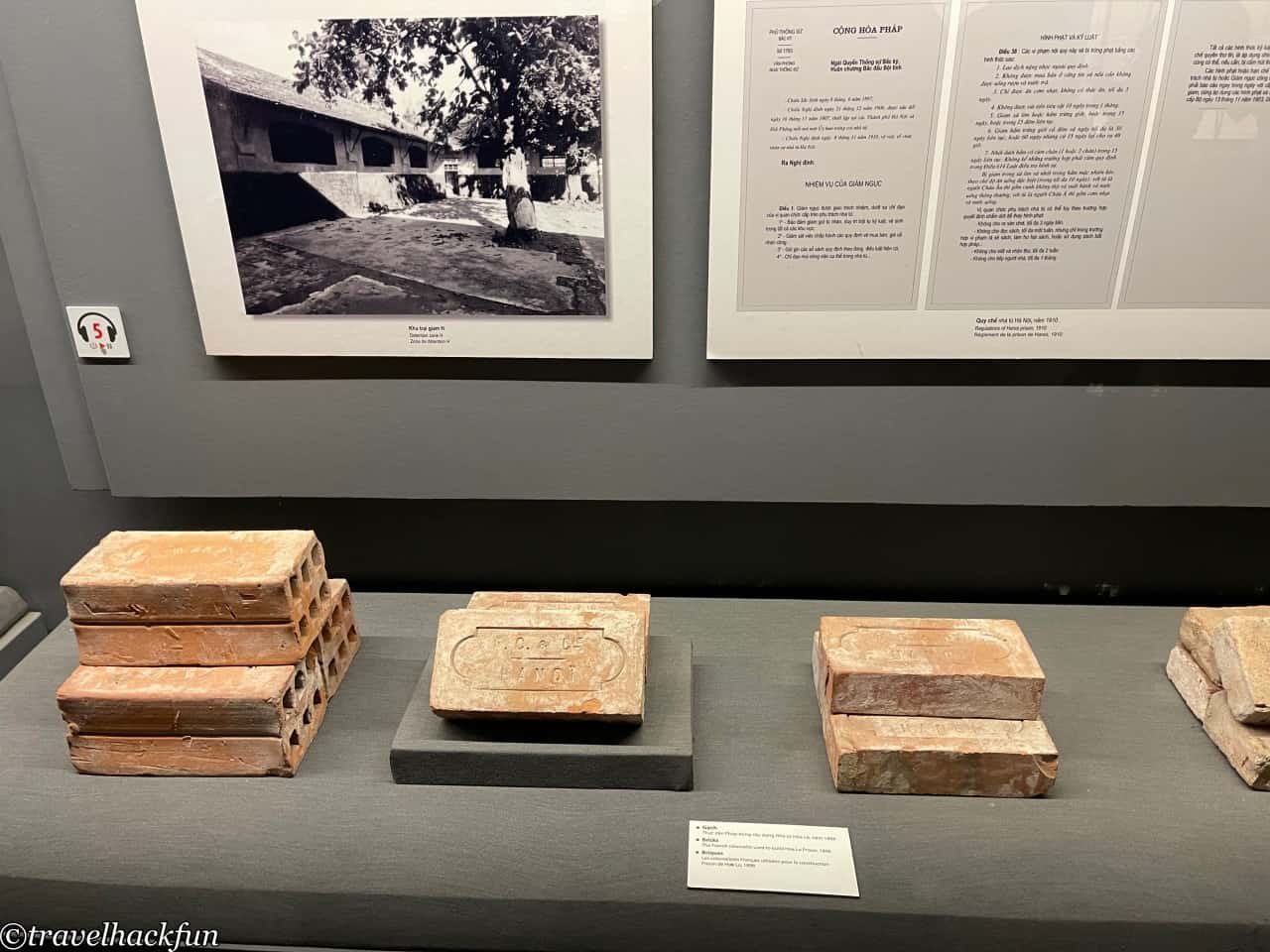
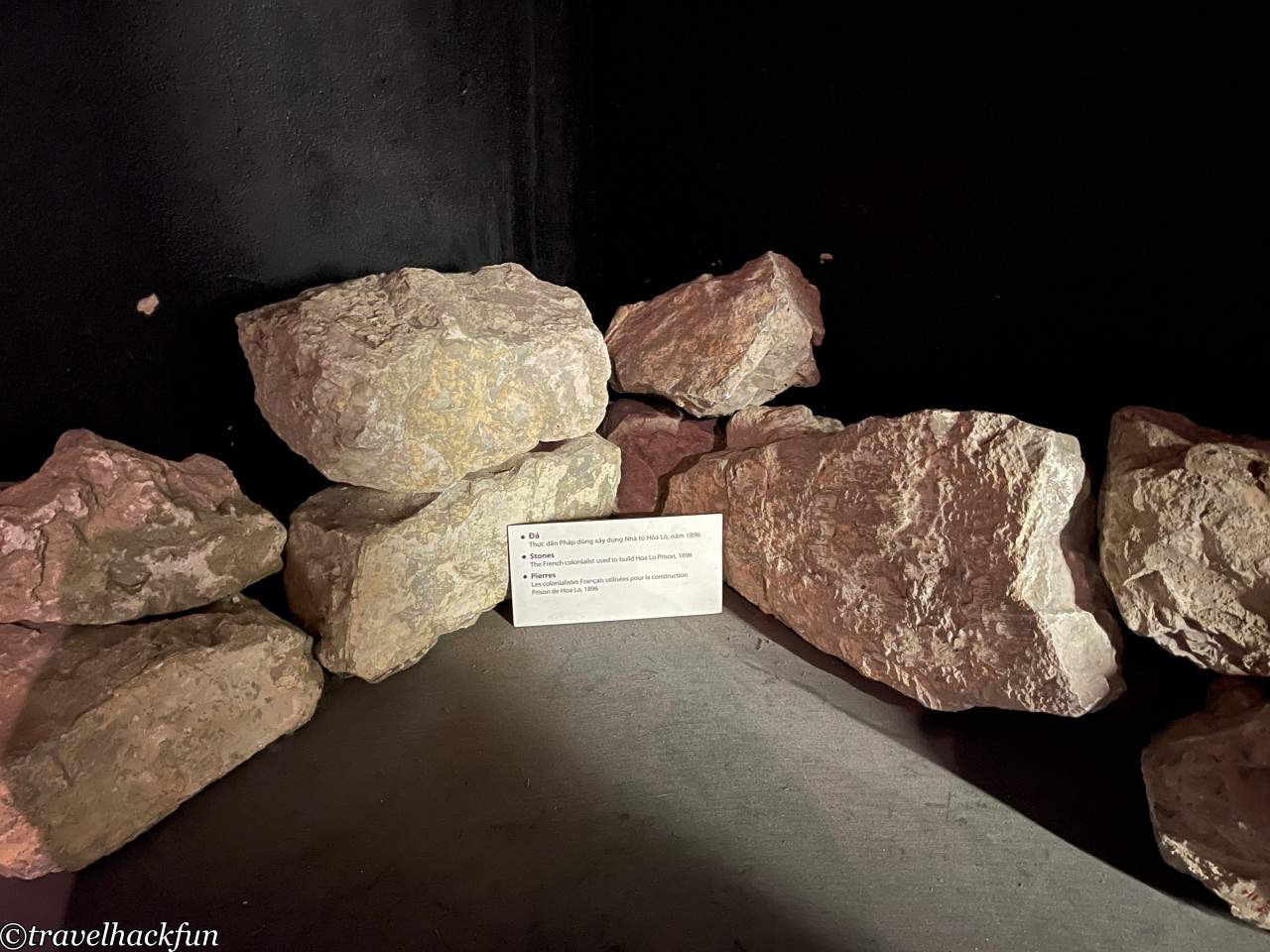
The French Colonial Period | Prison Life of Vietnamese Prisoners
The exhibits here display the items provided to prisoners at the time. Each prisoner normally had two sets of prison clothes: one for summer and one for winter. The clothes were quite thin, marked with the letters "MC", and generally ill-fitting, being both short and tight. In the winter, due to the cold, some inmates had to request sponges from the medical office to place in front of their chests for warmth. There was a period when the treatment of prisoners was so poor that they only had one set of clothes left, leading to a collective protest by the inmates, who stripped naked. Regarding food, bowls and utensils made of coconut were used, with ten minutes allotted for each meal. The food provided, sometimes moldy due to the greed of the jailers, was inadequate.
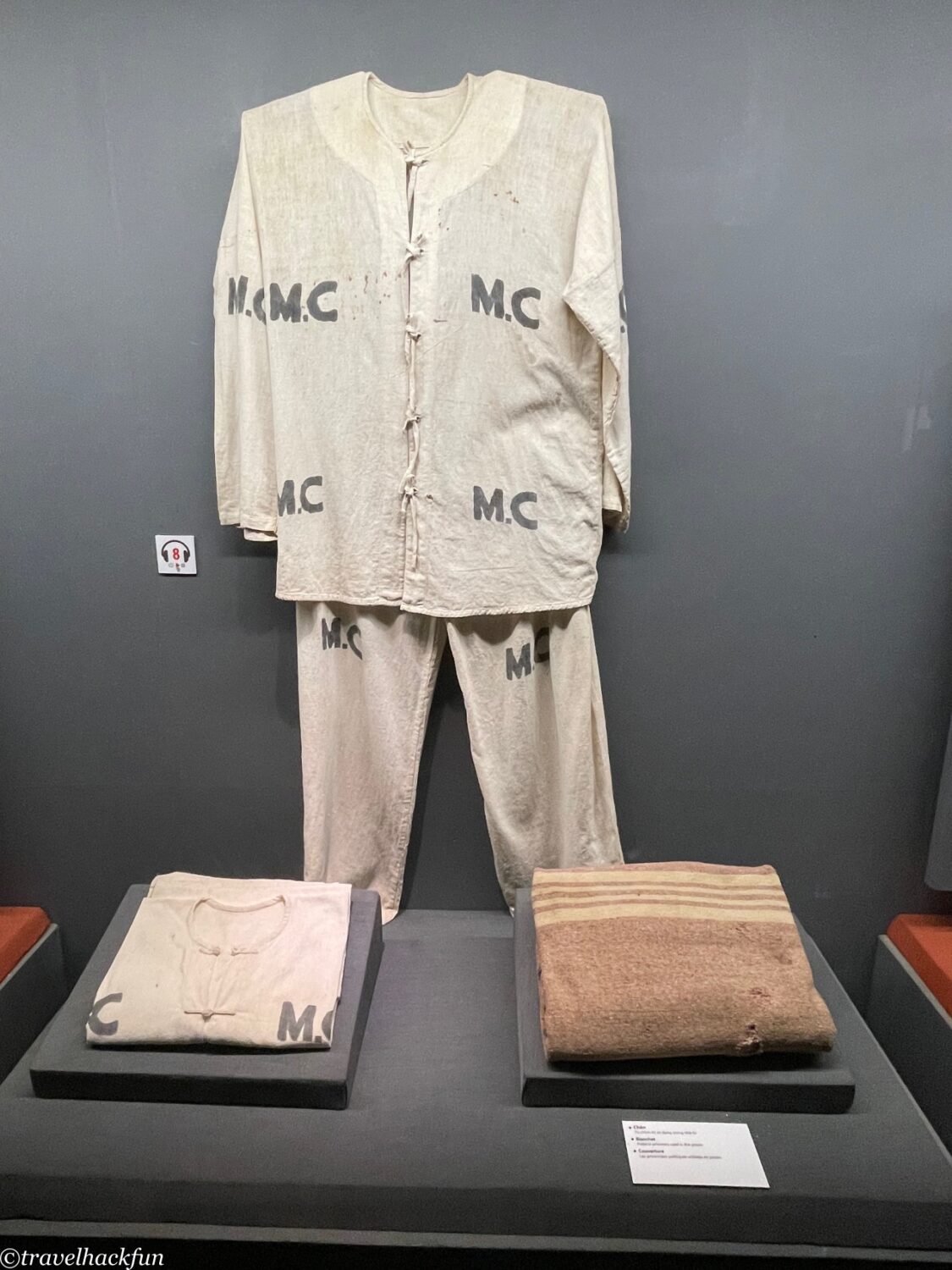
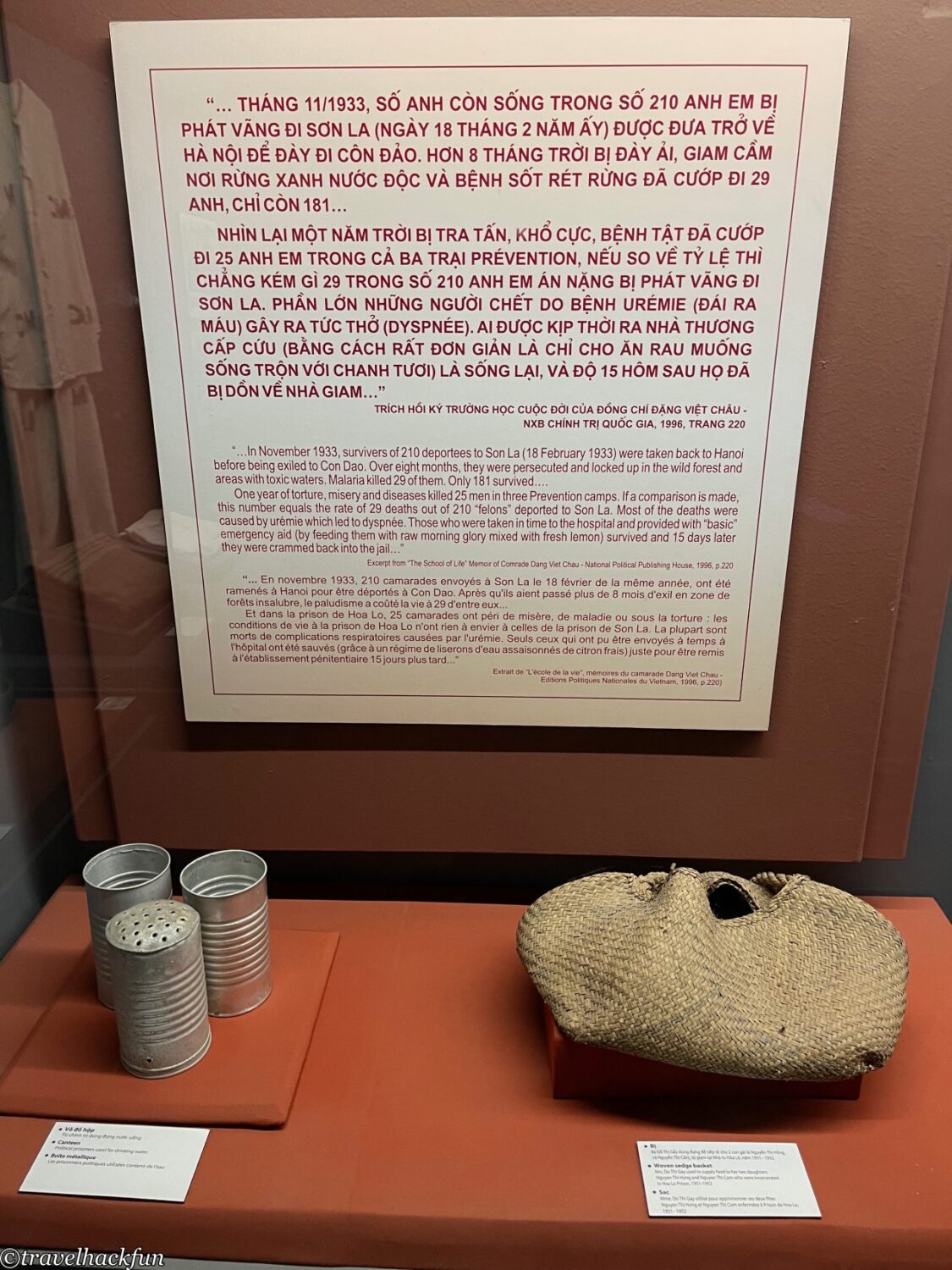
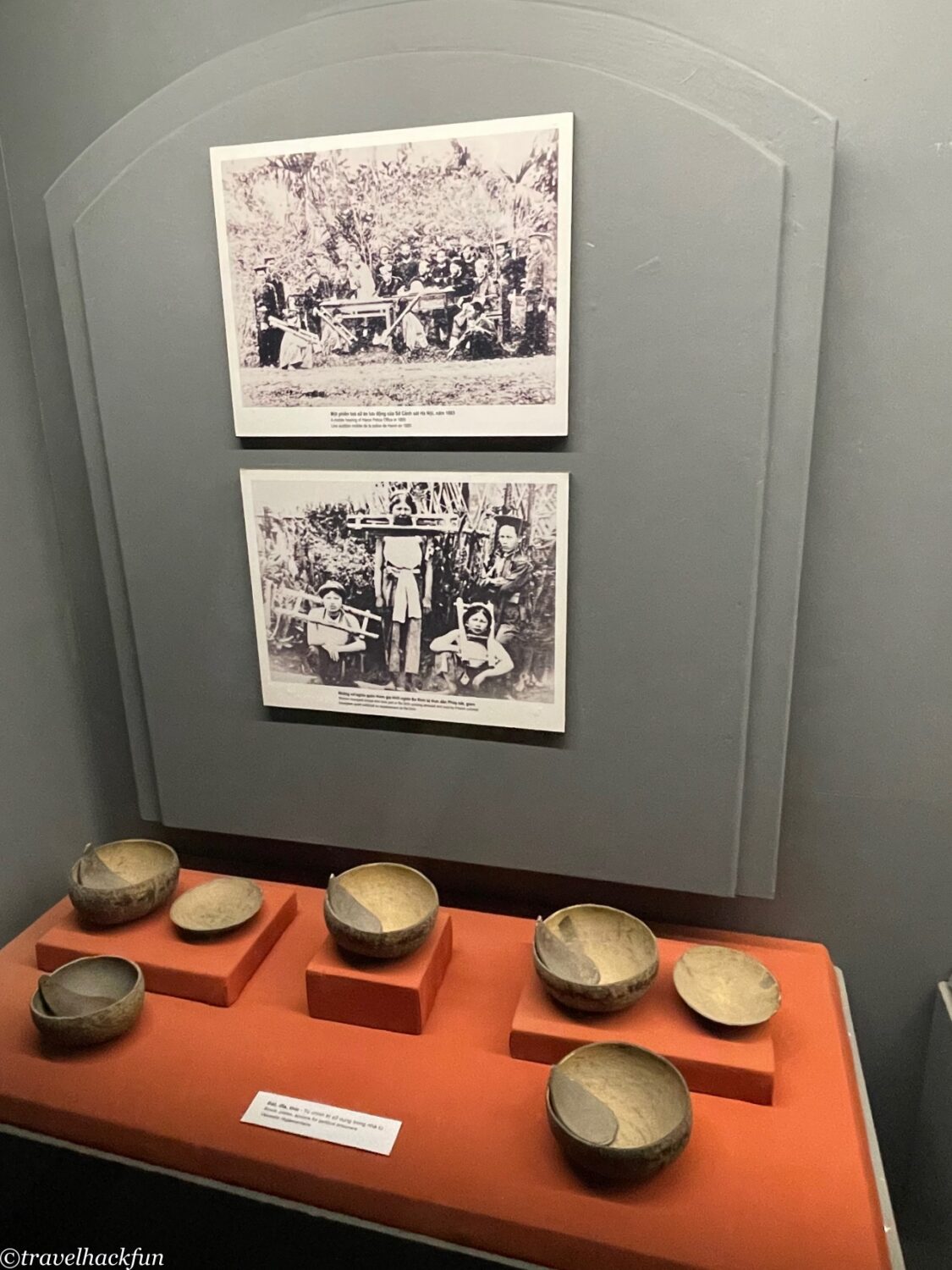
A large iron door in the prison has been preserved, symbolizing oppression and imprisonment.
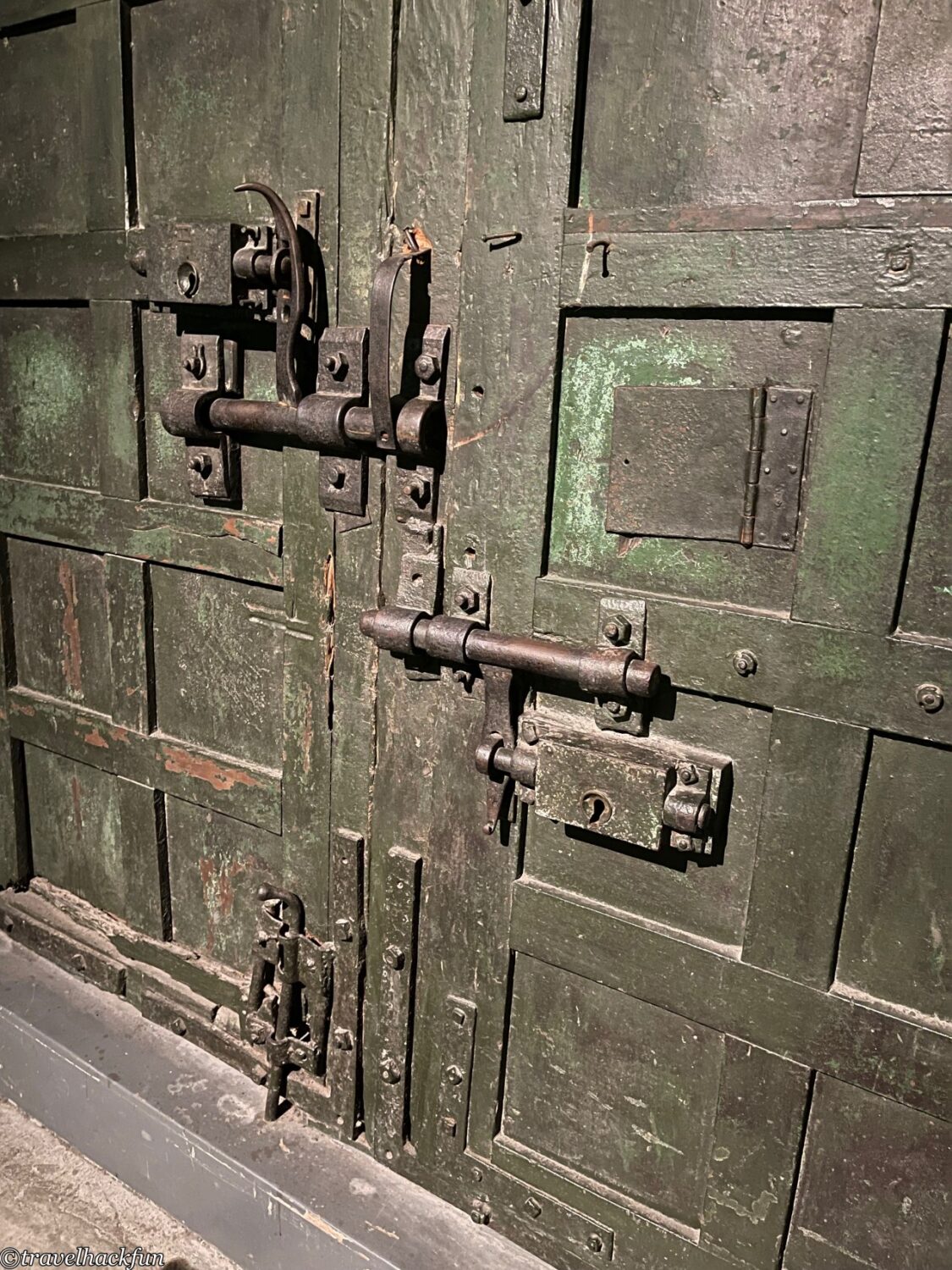
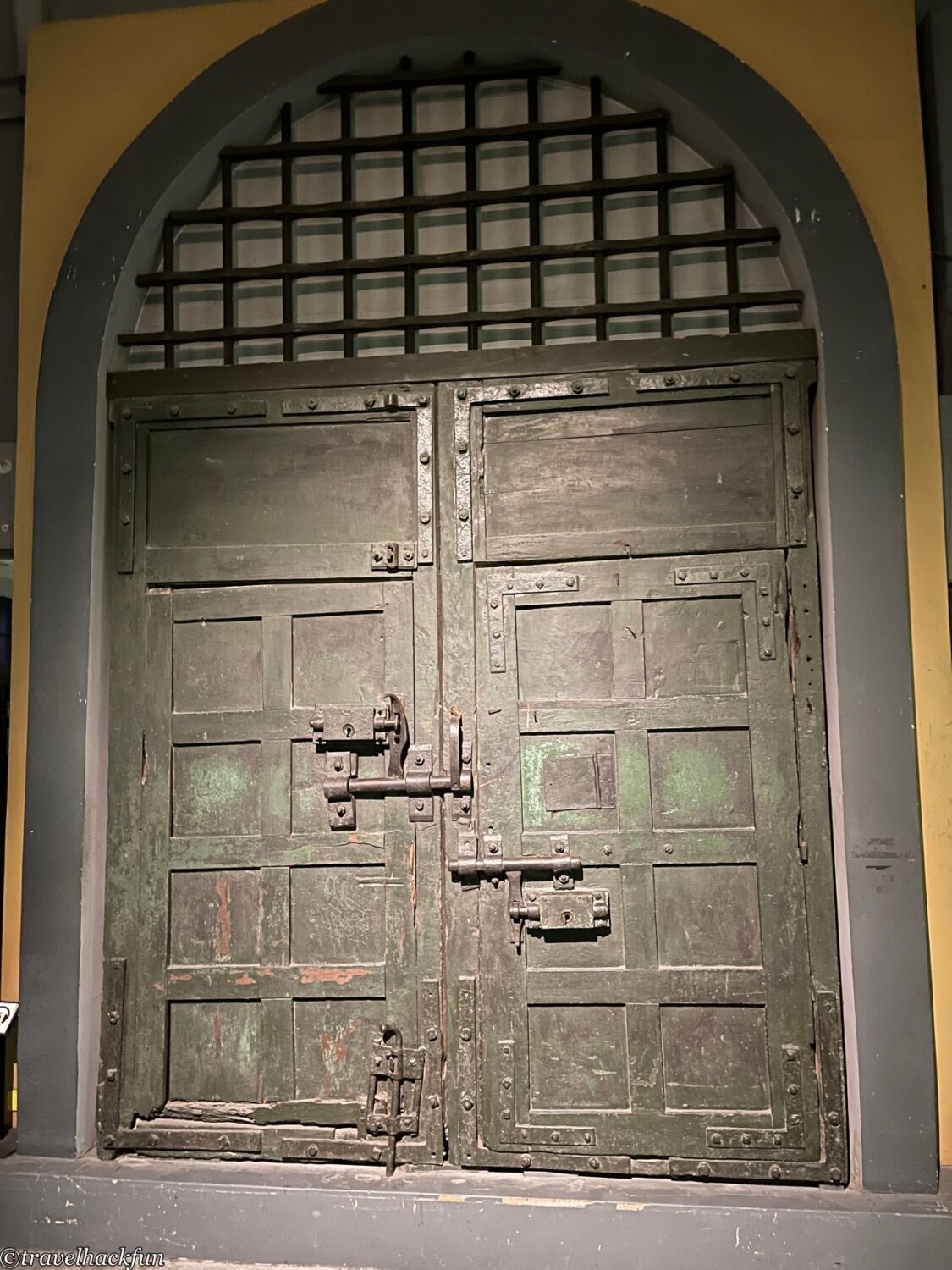
After entering the large iron gate is the first detention area, which held many political prisoners. The space inside the prison was quite limited; originally, the room design could accommodate up to forty or fifty people. However, due to the excessive number of inmates, at one point, there were over a hundred people in the first detention area, forcing prisoners to take turns lying down due to the lack of space. This area was also designated for political prisoners. To prevent inmates from engaging in secret organizational activities, the prison implemented many strict regulations, including a ban on books and newspapers. The punishments for violating these regulations were varied and bizarre, such as prohibiting everyone from flushing the toilet during protest periods, forcing prisoners to live in extremely poor sanitary conditions.


Individuals who violated the rules and were considered to have committed serious offenses were isolated in a dungeon area known as the Cachot. A former General Secretary of the Communist Party of Vietnam was once imprisoned here. This place was not only extremely dark but also had worse conditions; there were no toilets, so inmates had to relieve themselves on the spot, and even the floor was sloped to prevent people from lying down comfortably.
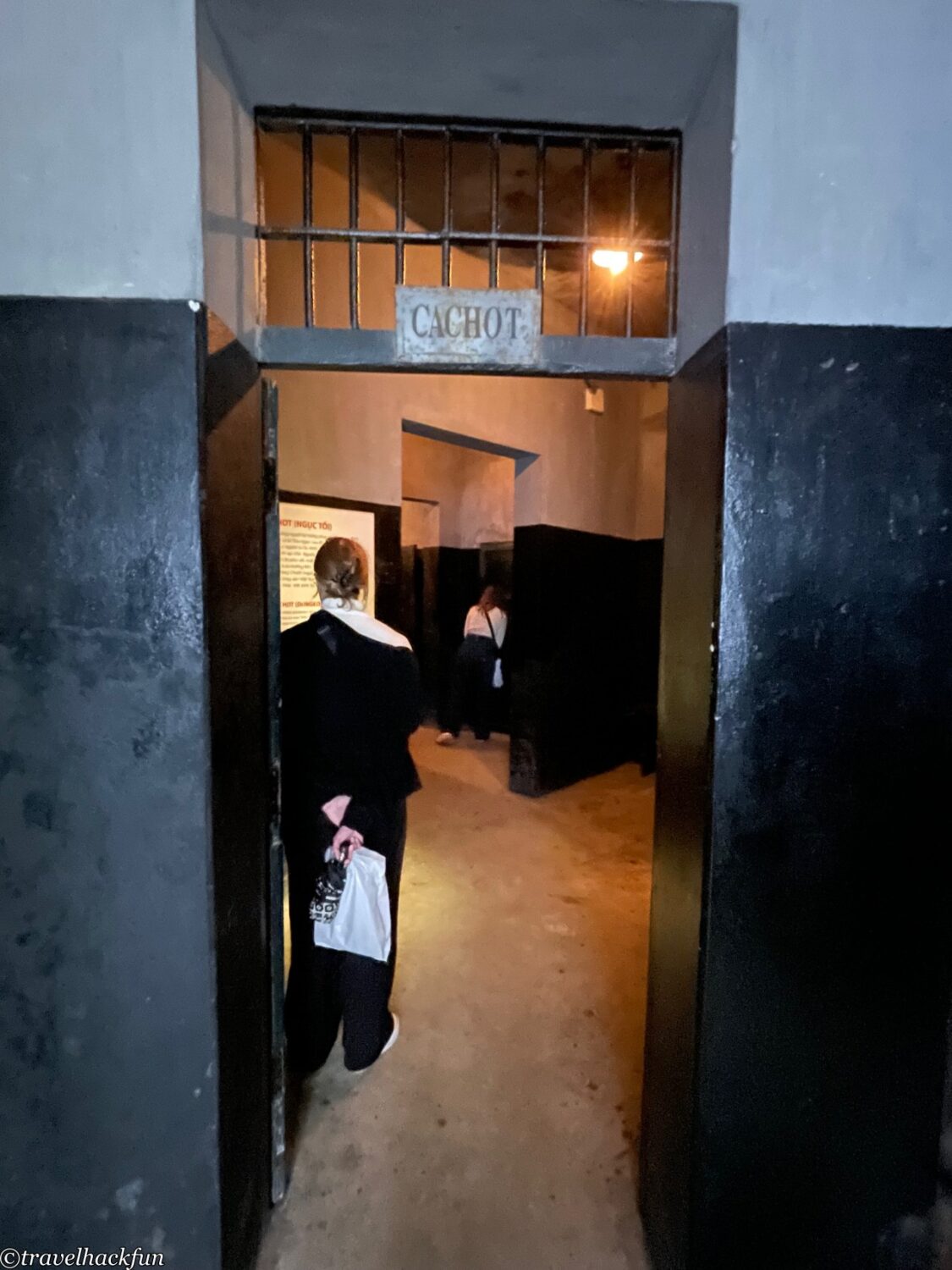
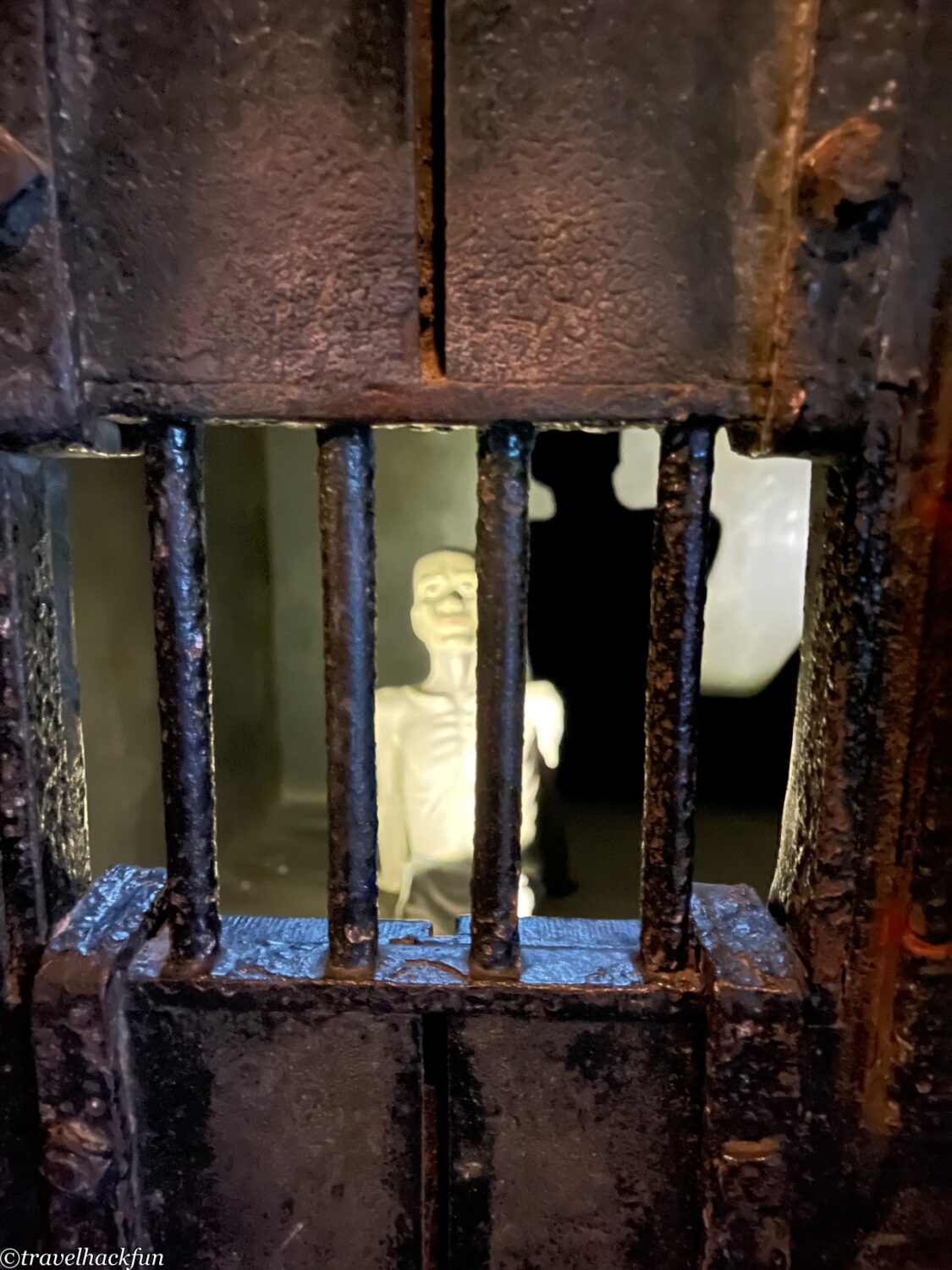
Female prisoners were detained in a separate section. Hoa Lo Prison once held many renowned Vietnamese female revolutionaries. For example, Nguyen Thi Ba, who was imprisoned for her involvement in conspiracies against the French colonial military, suffered severe torture in prison and ultimately died there, becoming a symbol of Vietnamese female martyrs. Other notable female prisoners include Hoang Ngan, Hoang Thi Ai, and Nguyen Thi Quang Thai, all of whom had close connections with key figures in the Vietnamese revolution.
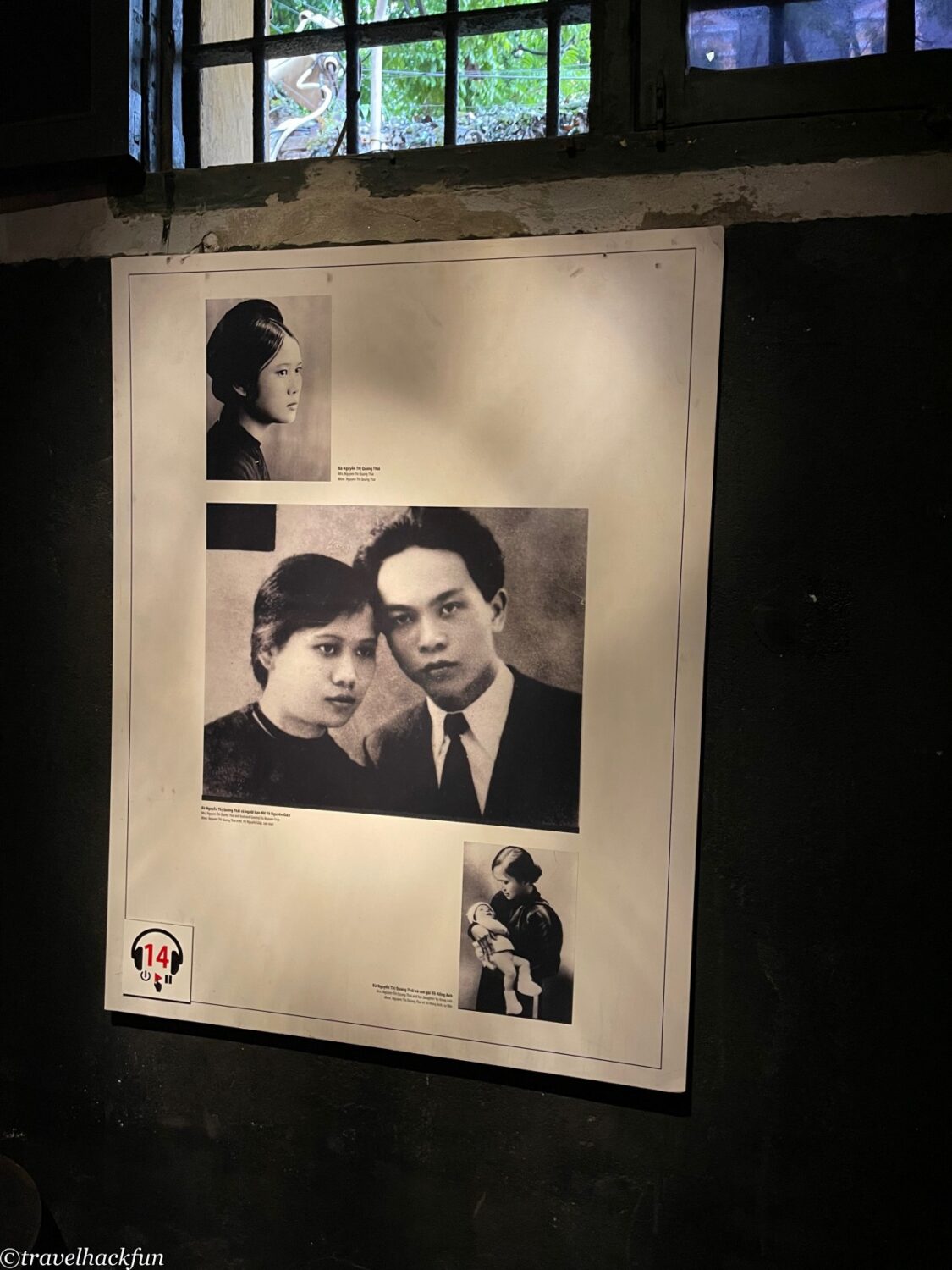
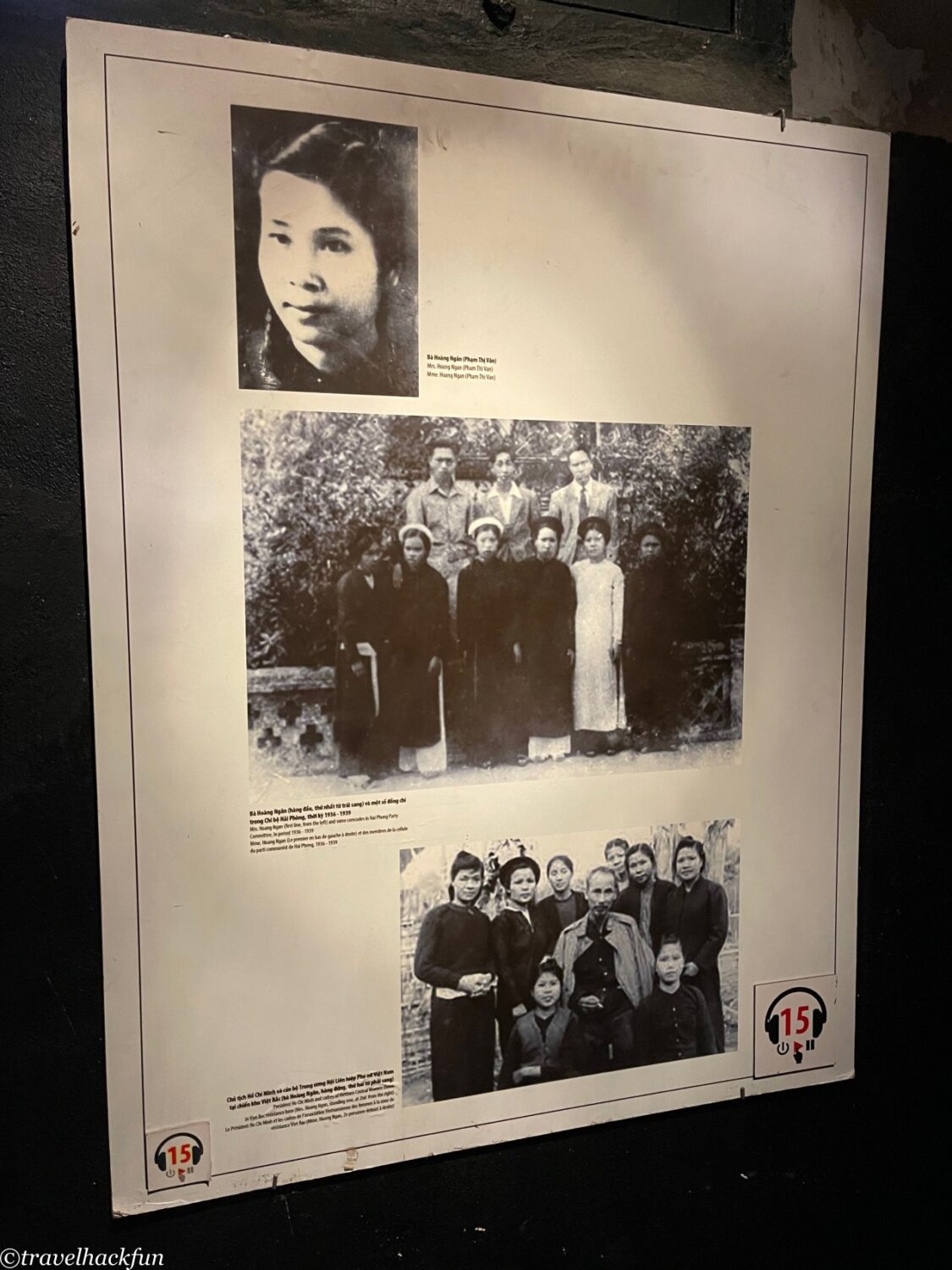
The cells for female prisoners housed about thirty individuals each, not including children who were detained along with their mothers. Although there were fewer people, the space was also smaller and just as crowded. The prisoners would allow those who were weaker to stay close to the door, where they could breathe more fresh air.
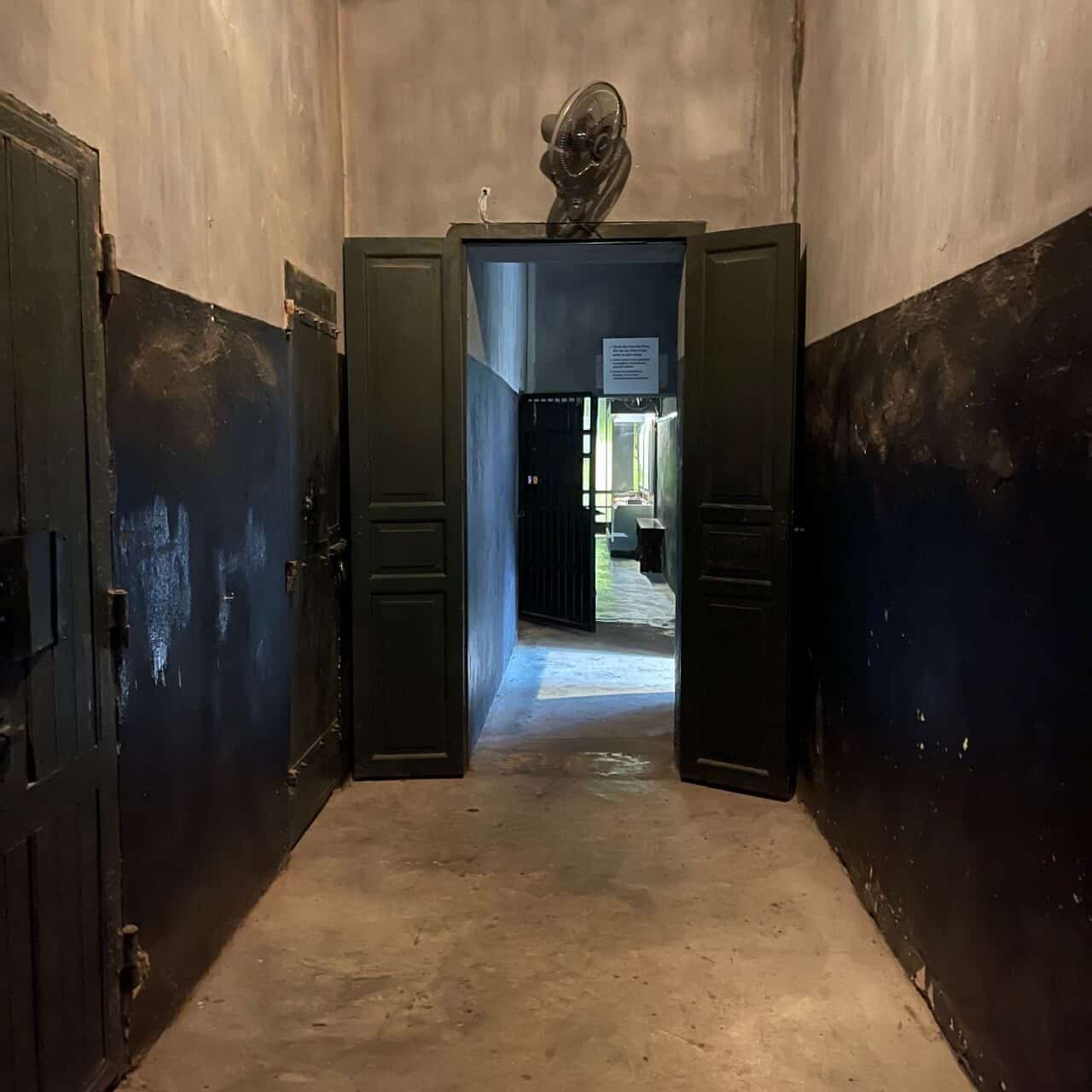
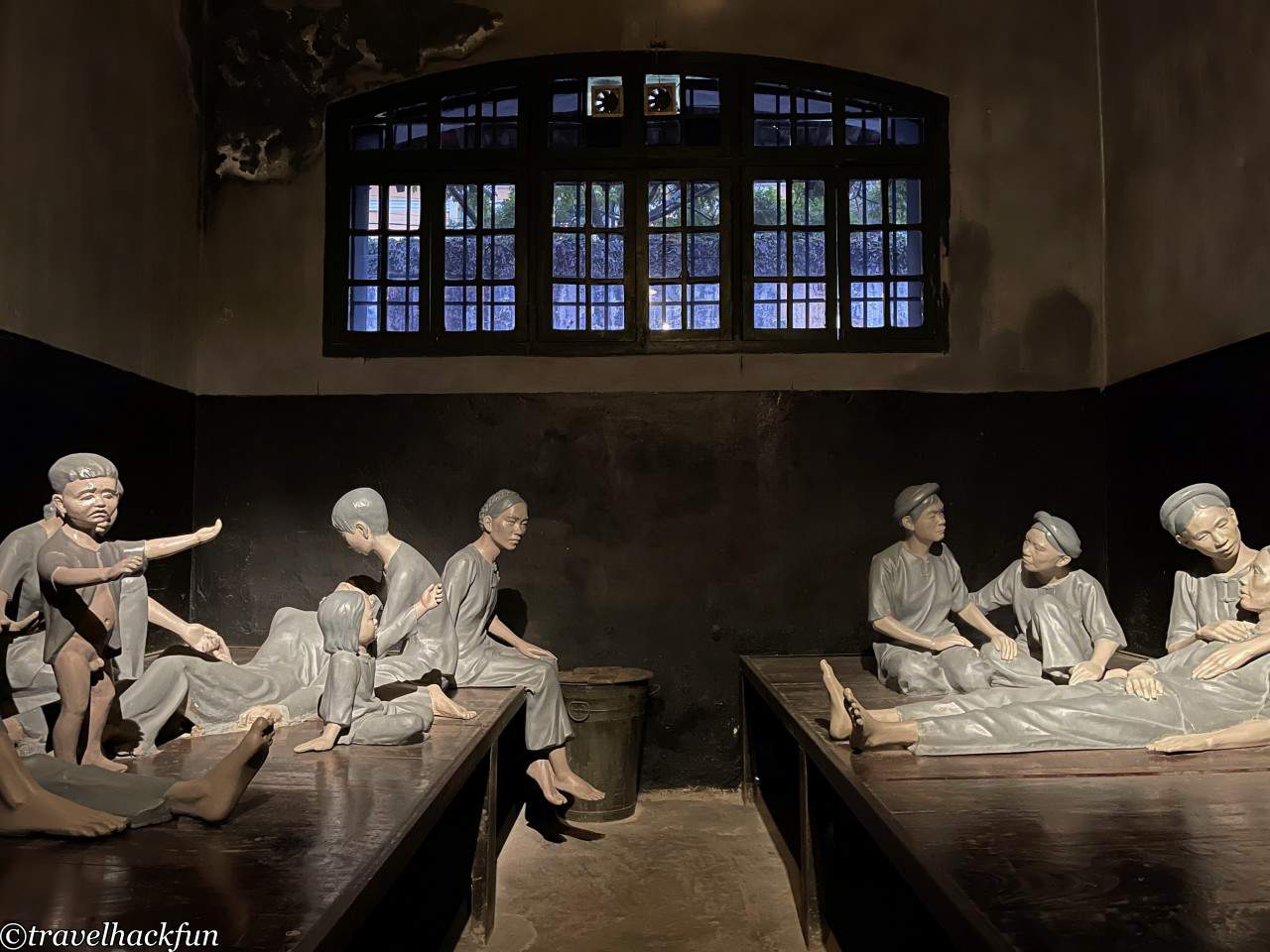
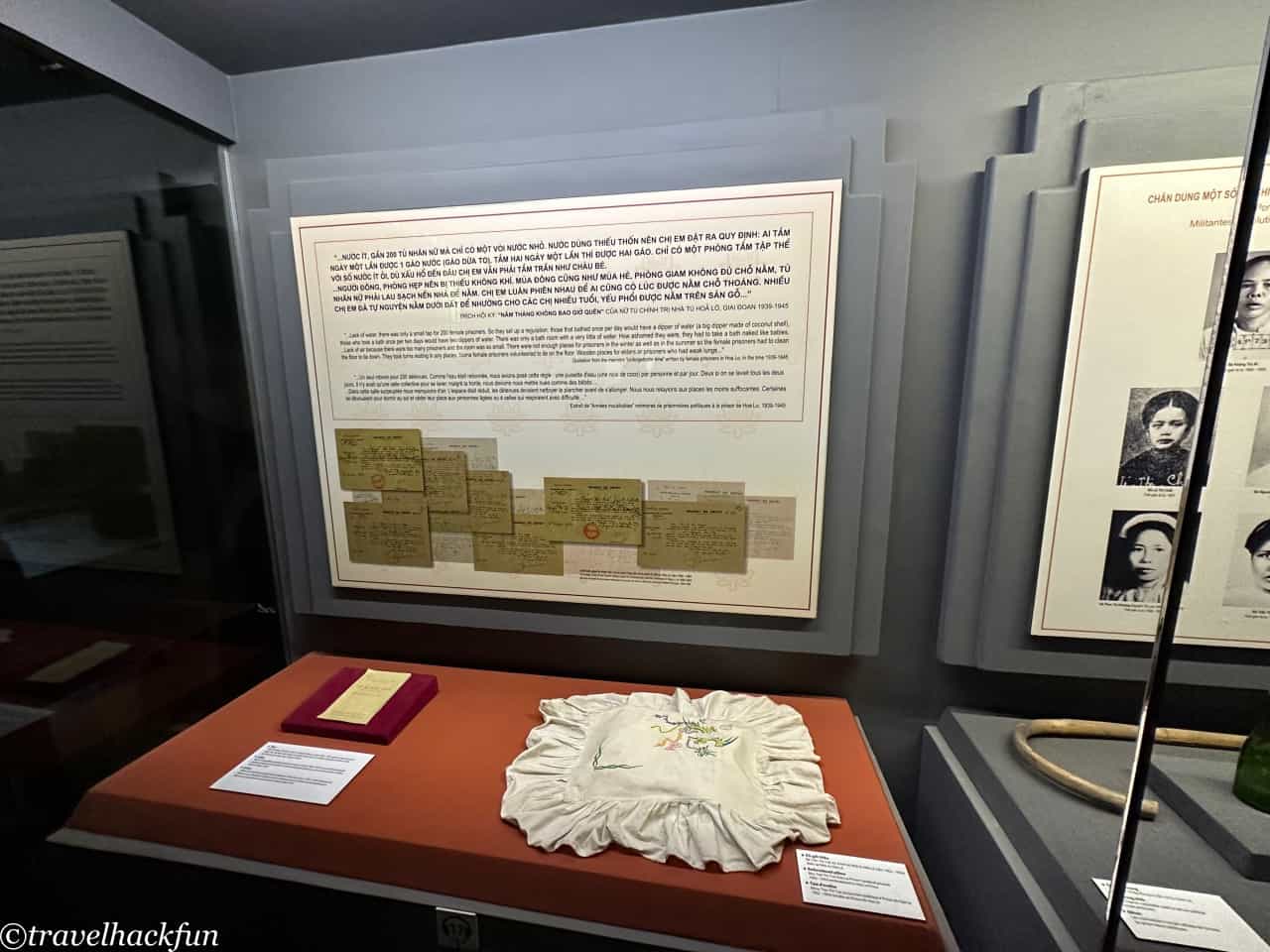
For those with serious offenses, there were indeed measures such as torture and capital punishment. In the latter part of the exhibit, we can see a guillotine used for executing death row inmates in the early 20th century, iron barrels for water torture, and hand-crank telephones used to generate electric shocks for torturing prisoners, among other things.
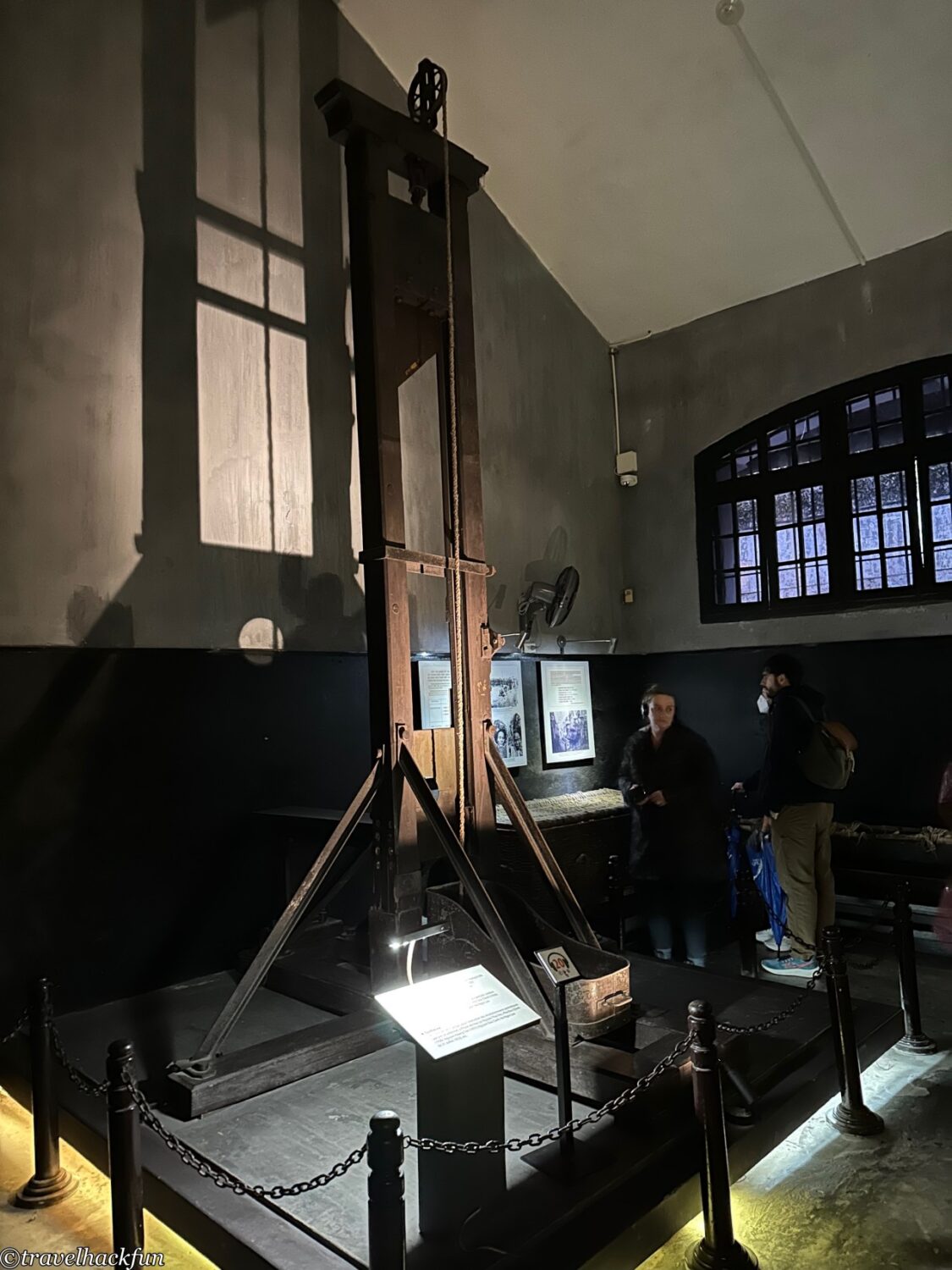
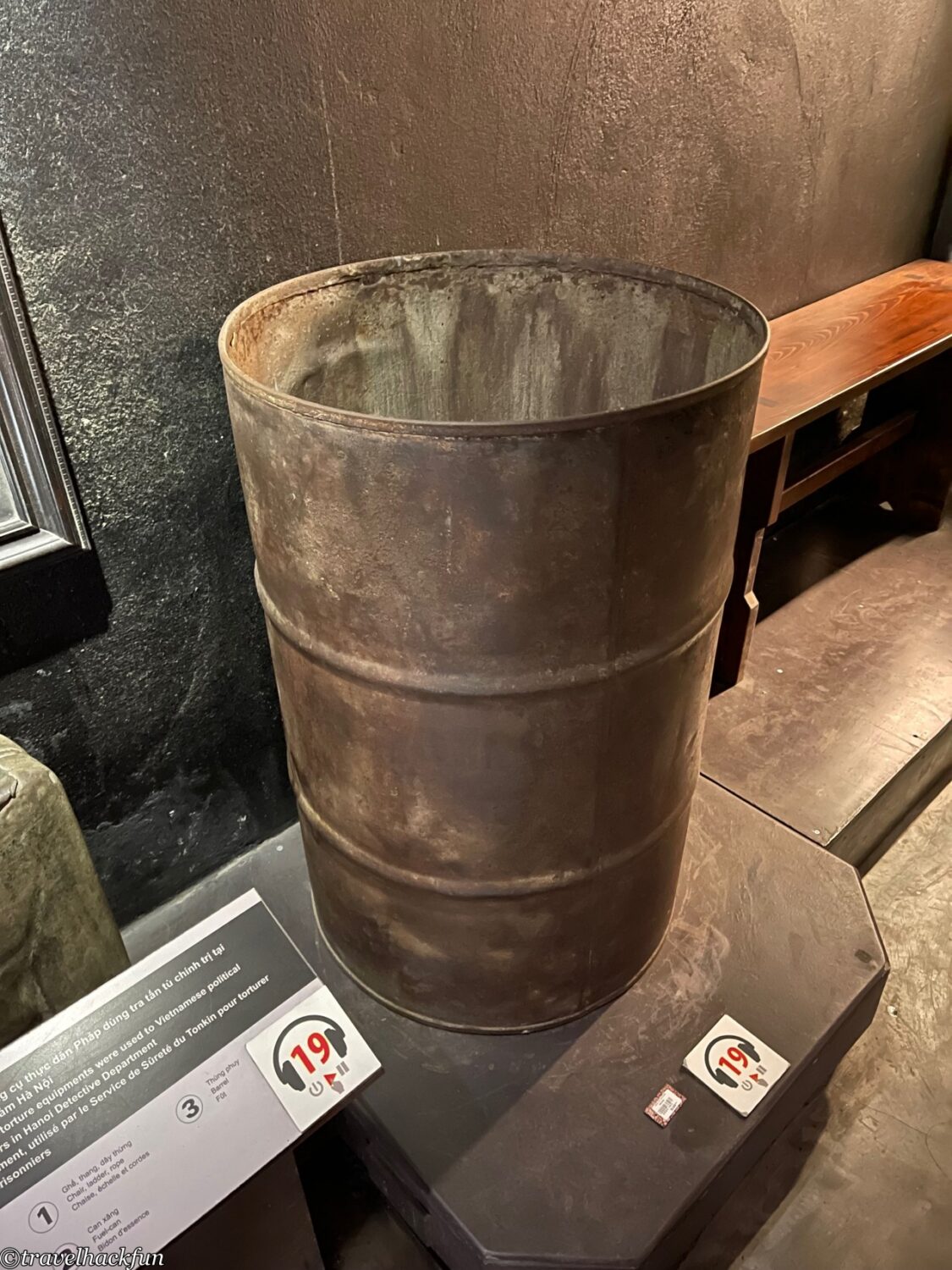
Death row inmates awaiting execution were detained in the death row section, where security measures were even more stringent than in the dungeon. Inmates in this area were completely prohibited from communicating with the outside world, and the walls were 40 centimeters thick.
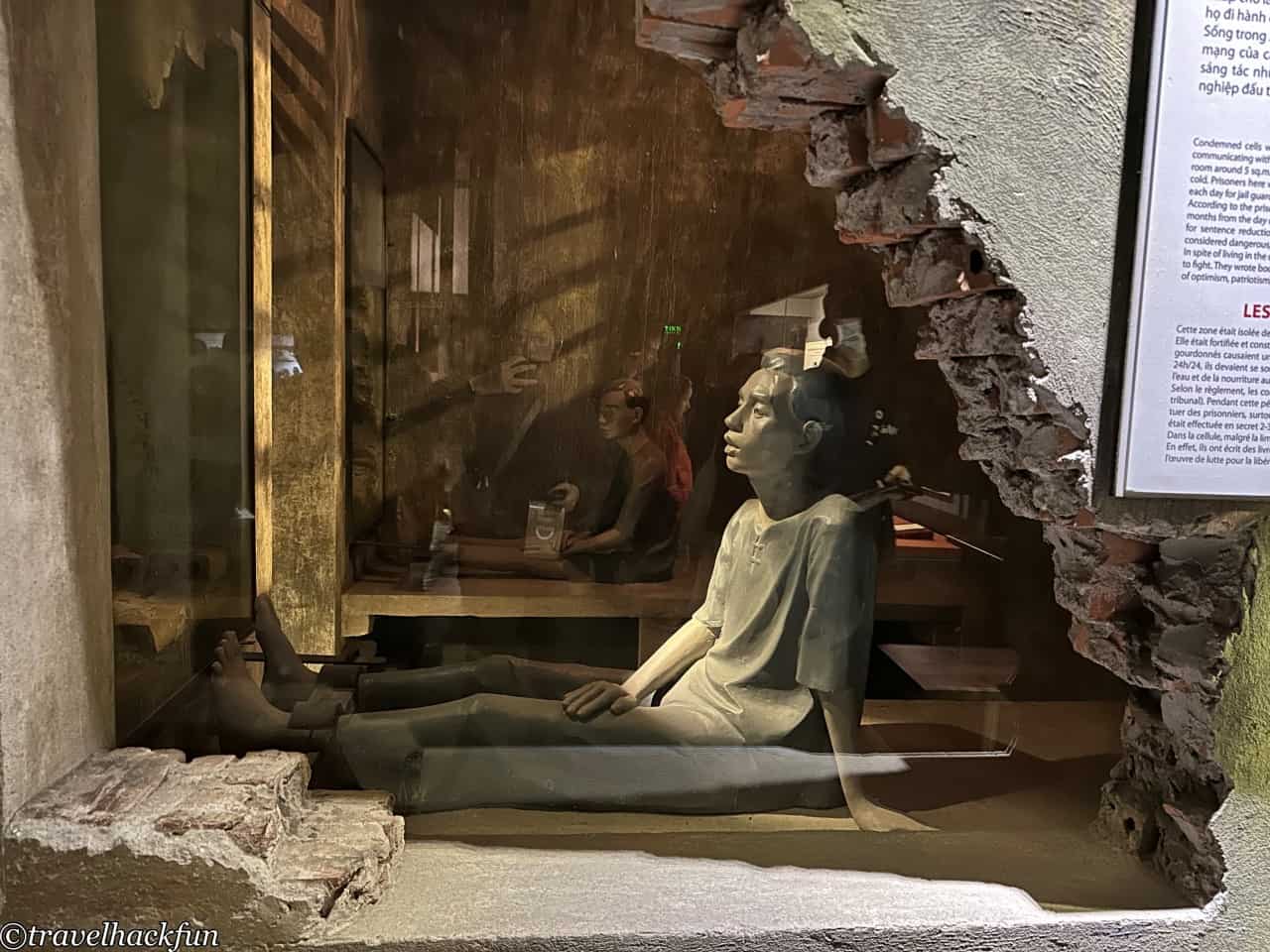
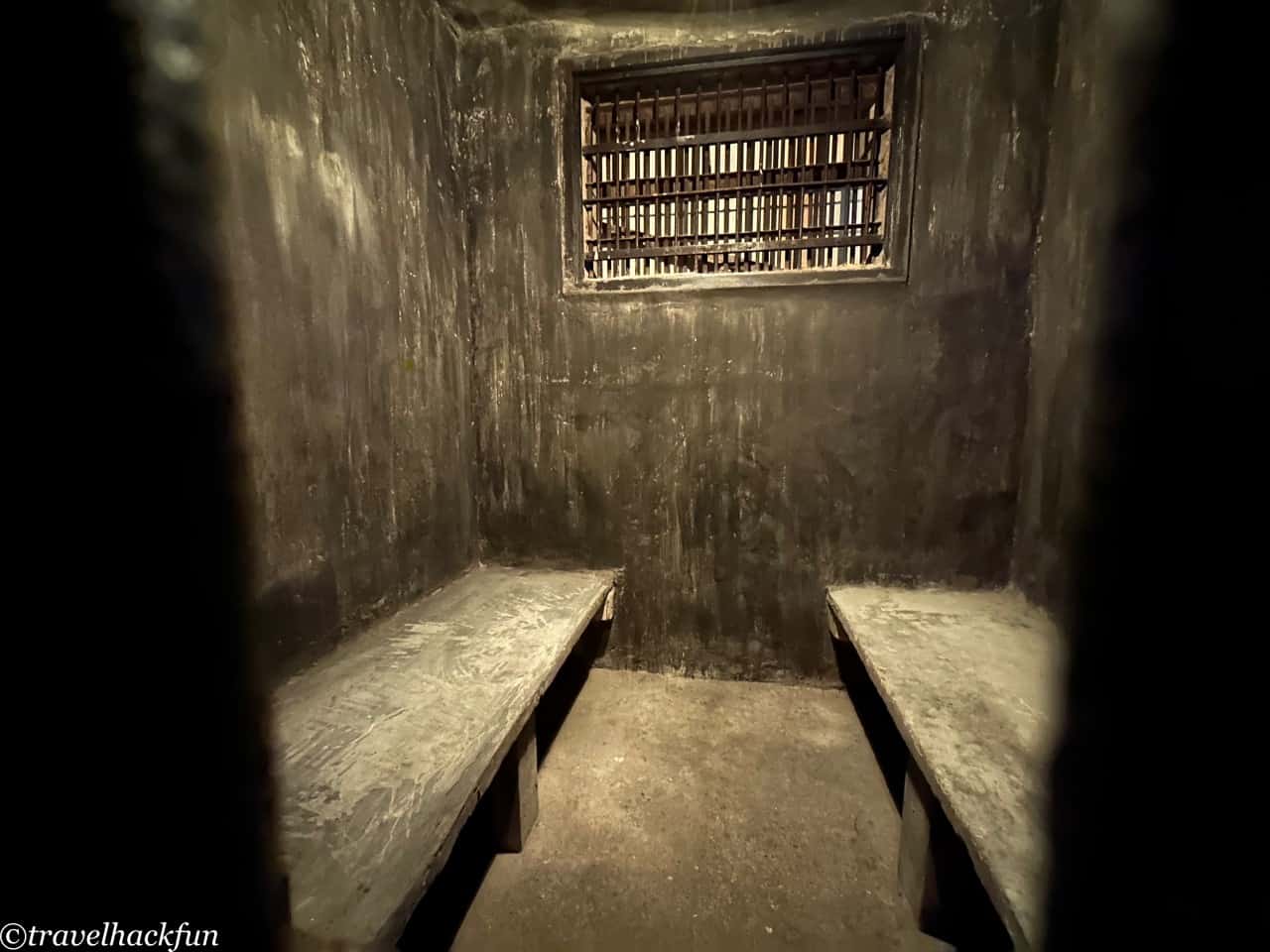
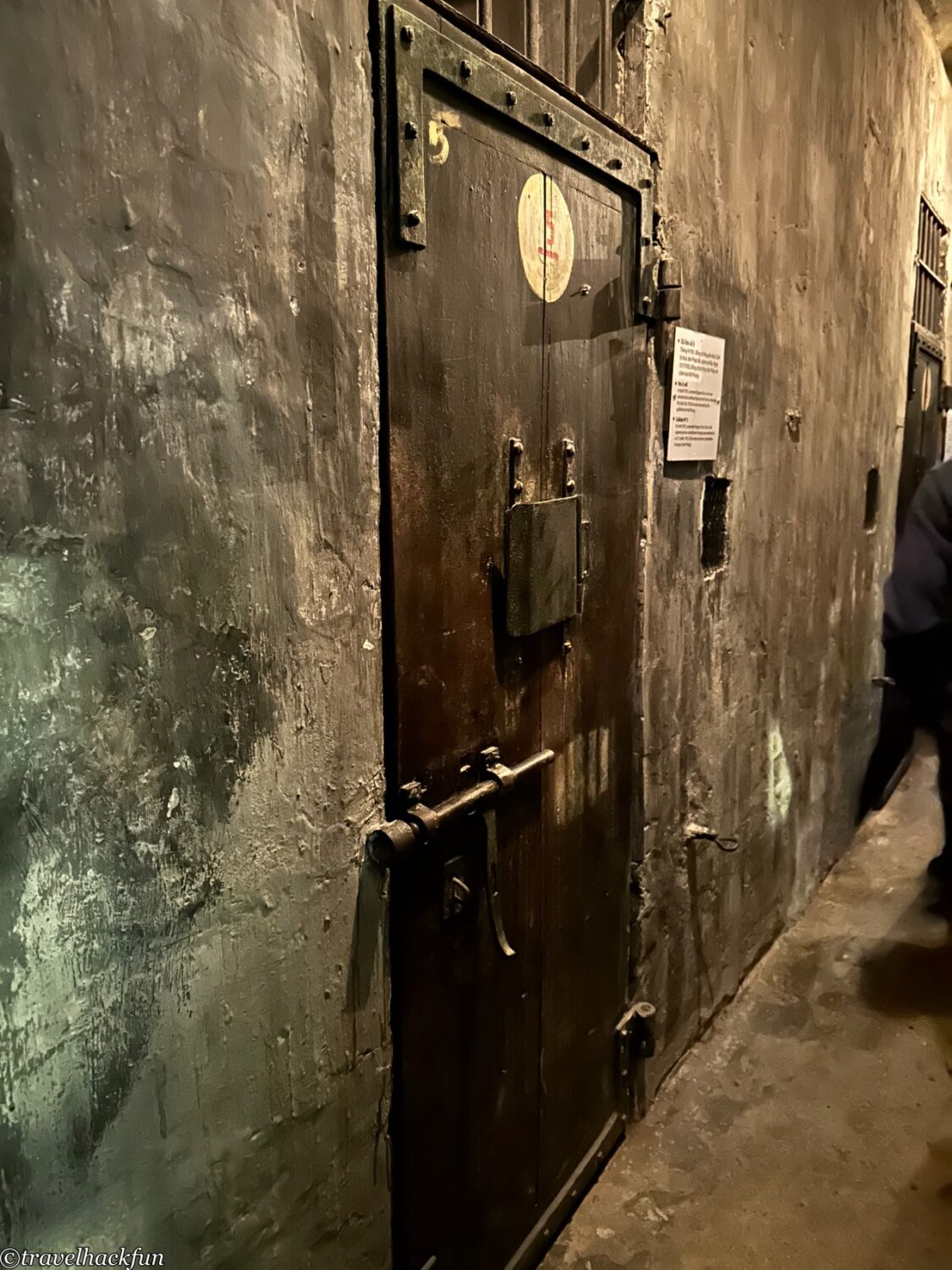

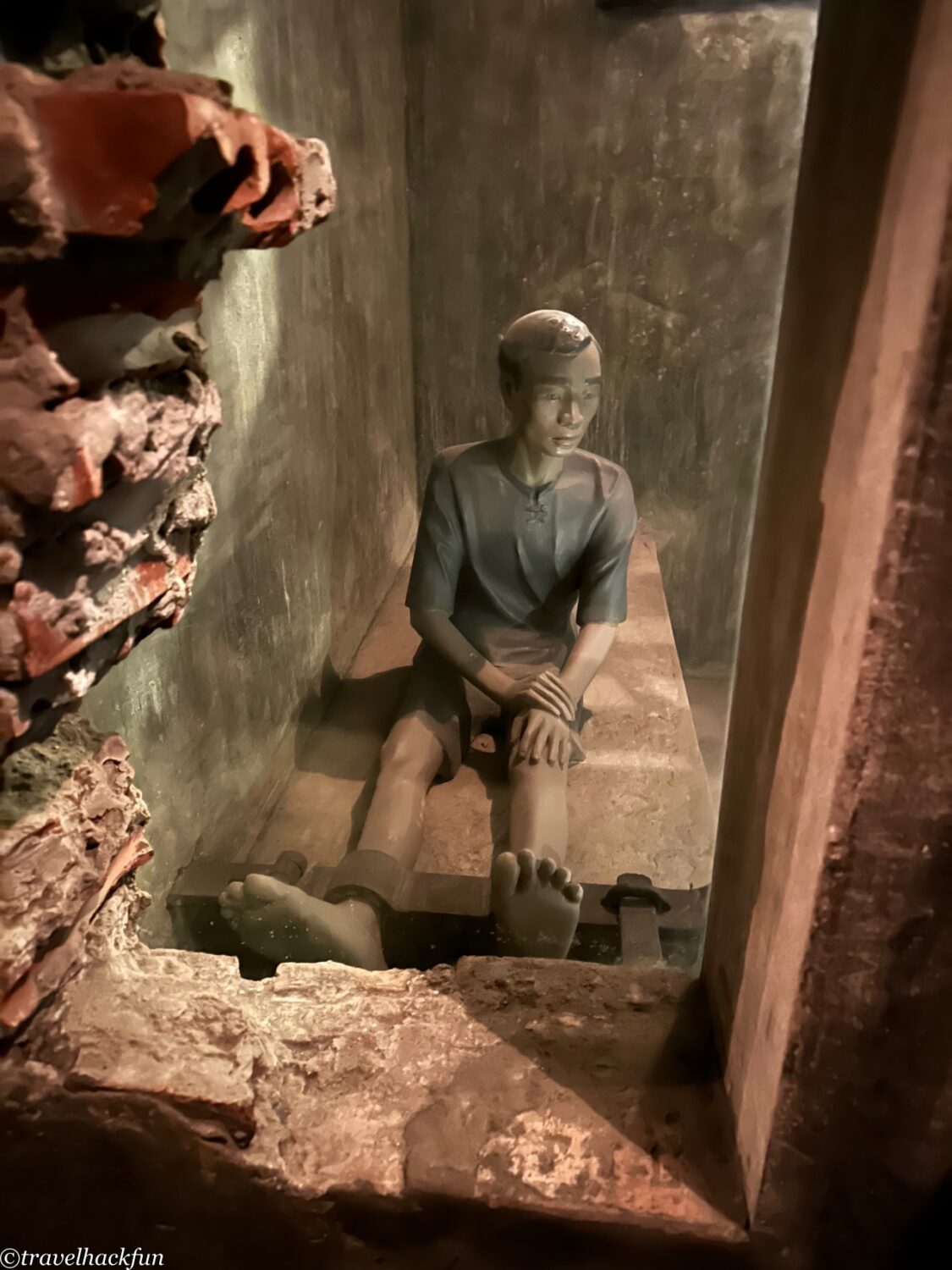
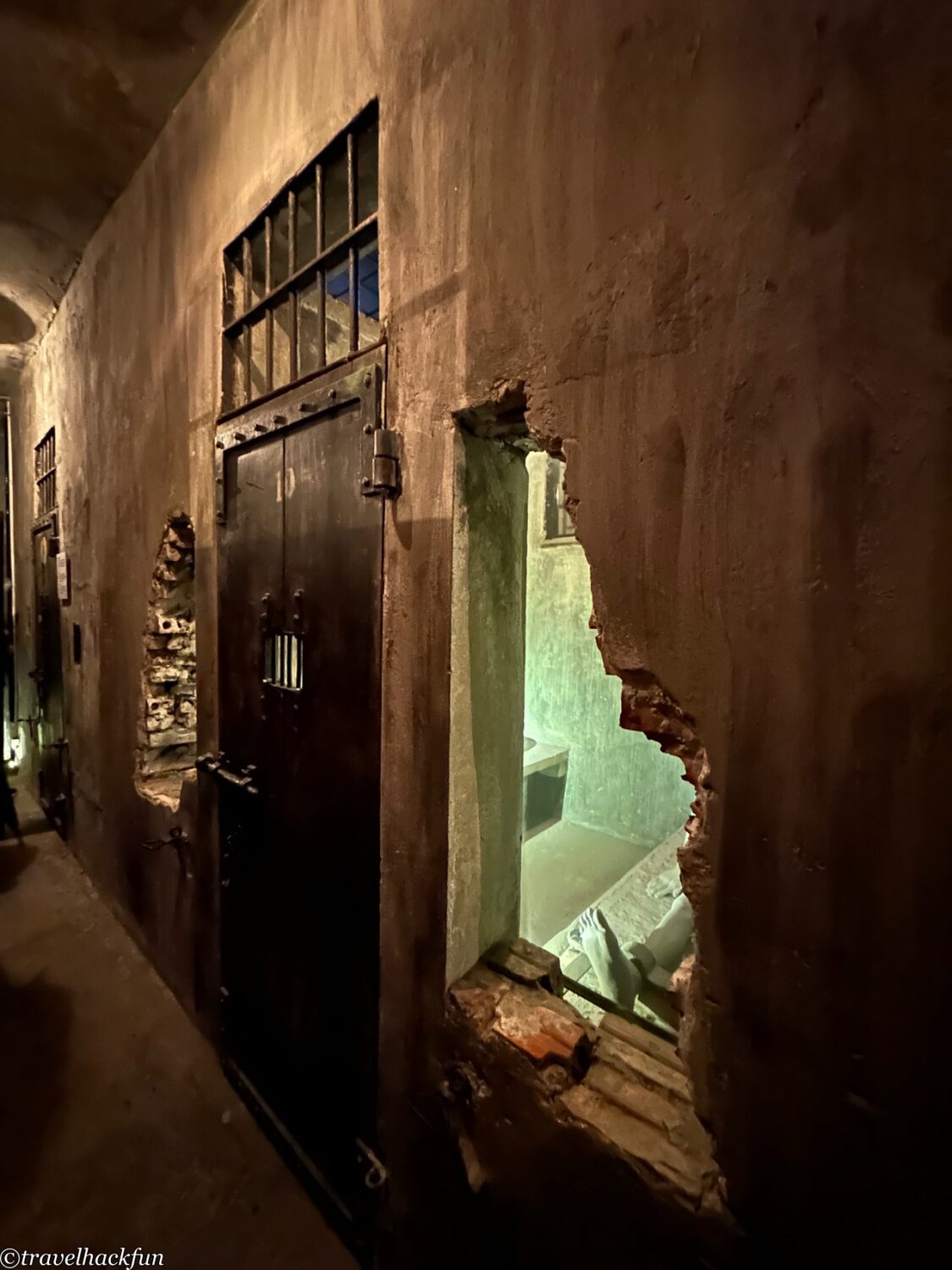

Vietnam War Period | American POWs at the "Hanoi Hilton"
During the Vietnam War, the role and significance of Hoa Lo Prison underwent a significant change. In this period, the prison's primary function shifted to detaining American and other anti-communist coalition POWs. Many American pilots were imprisoned here during the war. The person held the longest was James Stockdale, whose plane was shot down and who was captured at sea, remaining imprisoned for eight years. Another of the most famous prisoners was John McCain, who later became a U.S. Senator and presidential candidate.
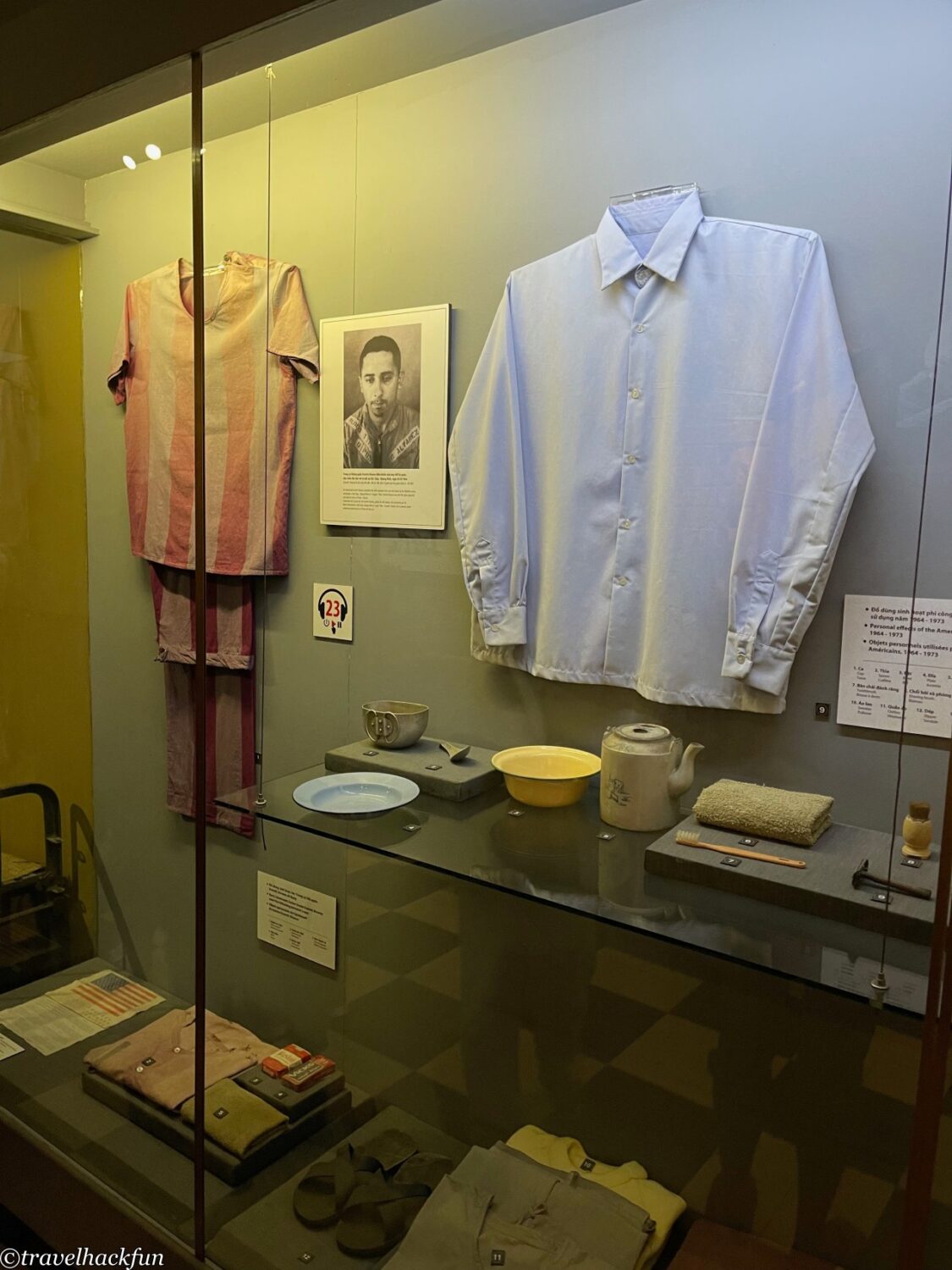
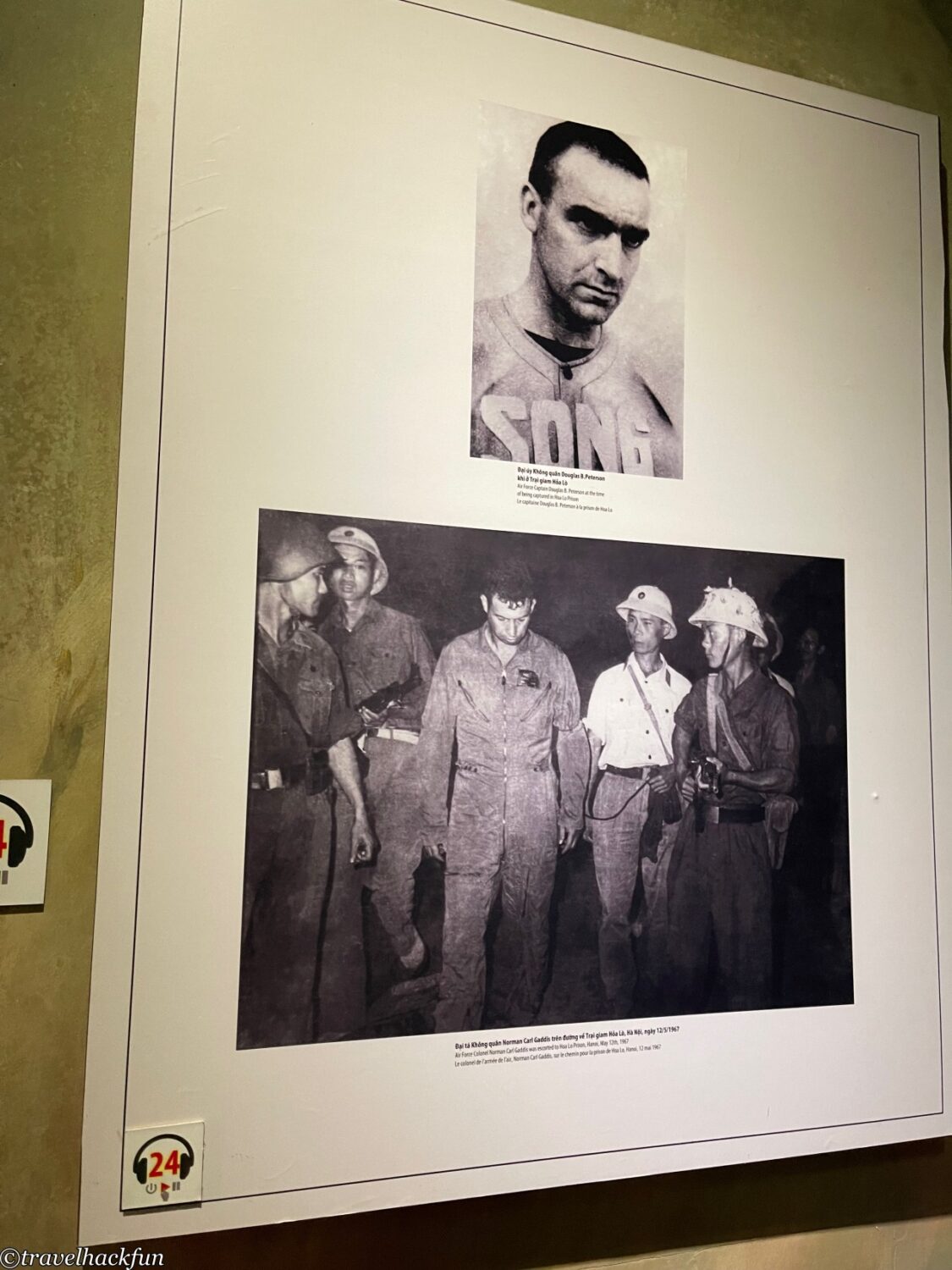
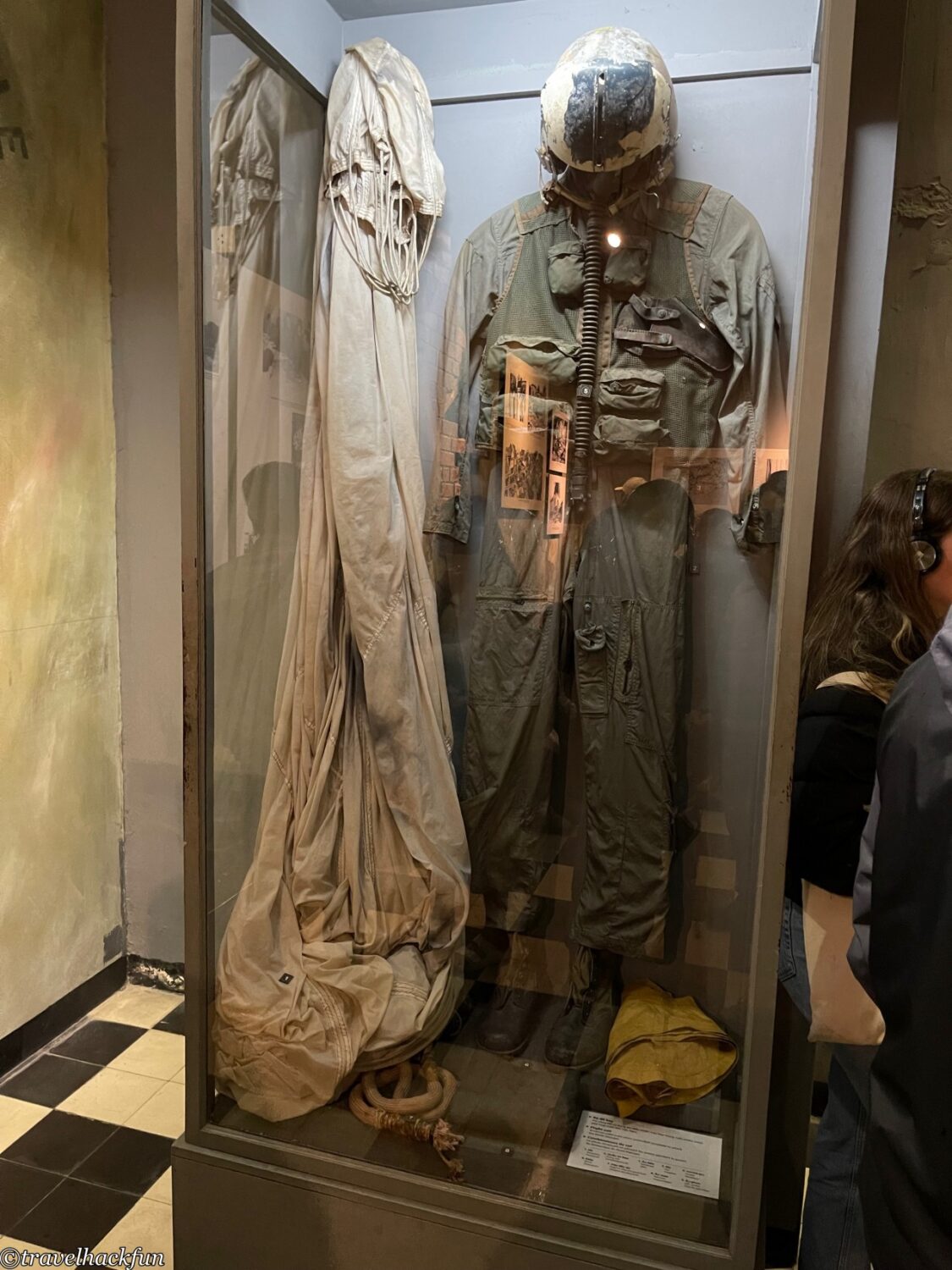
Due to the frequent capture of American pilots and other military personnel becoming the focus of news, during this period, Hoa Lo Prison's international fame surged dramatically. At the same time, the plight of these prisoners garnered the attention and sympathy of the international community, which in turn influenced public opinion about the war globally and contributed to the subsequent anti-war movement. For instance, as mentioned earlier, James Stockdale's mother became one of the well-known representatives of the anti-war movement.
Hoa Lo Prison and the History of the Communist Party Revolution
As mentioned earlier, Hoa Lo Prison, during the French colonial period, detained political prisoners, many of whom were members of the Communist Party of Vietnam seeking national independence. Thus, Hoa Lo Prison also became a symbol of the Vietnamese struggle against colonialism. Despite strict management, the secret organization of the Communist Party continued its activities. Members of the Communist Party of Vietnam even established party cells within the prison and managed to produce red flags representing the Communist Party.

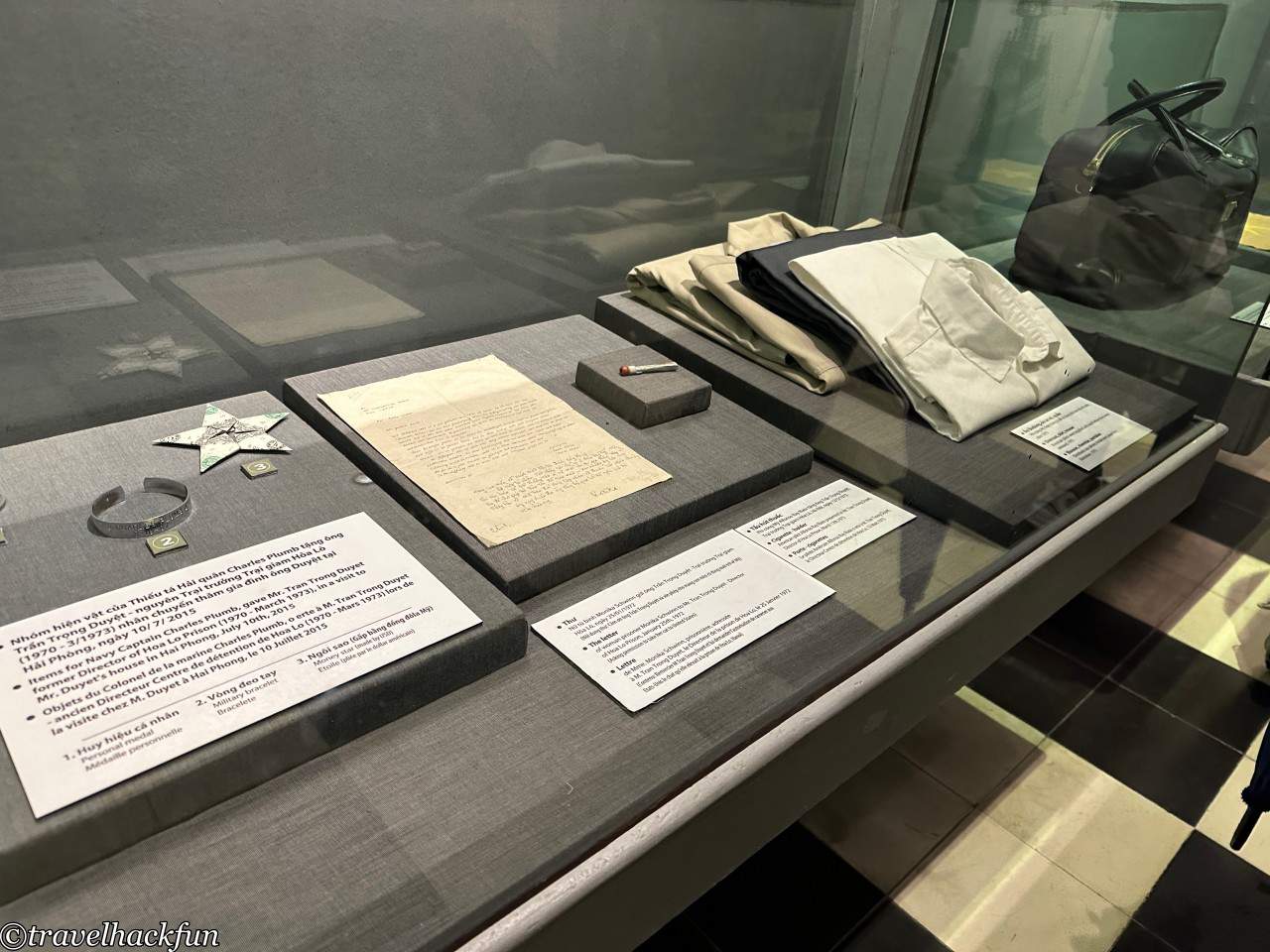

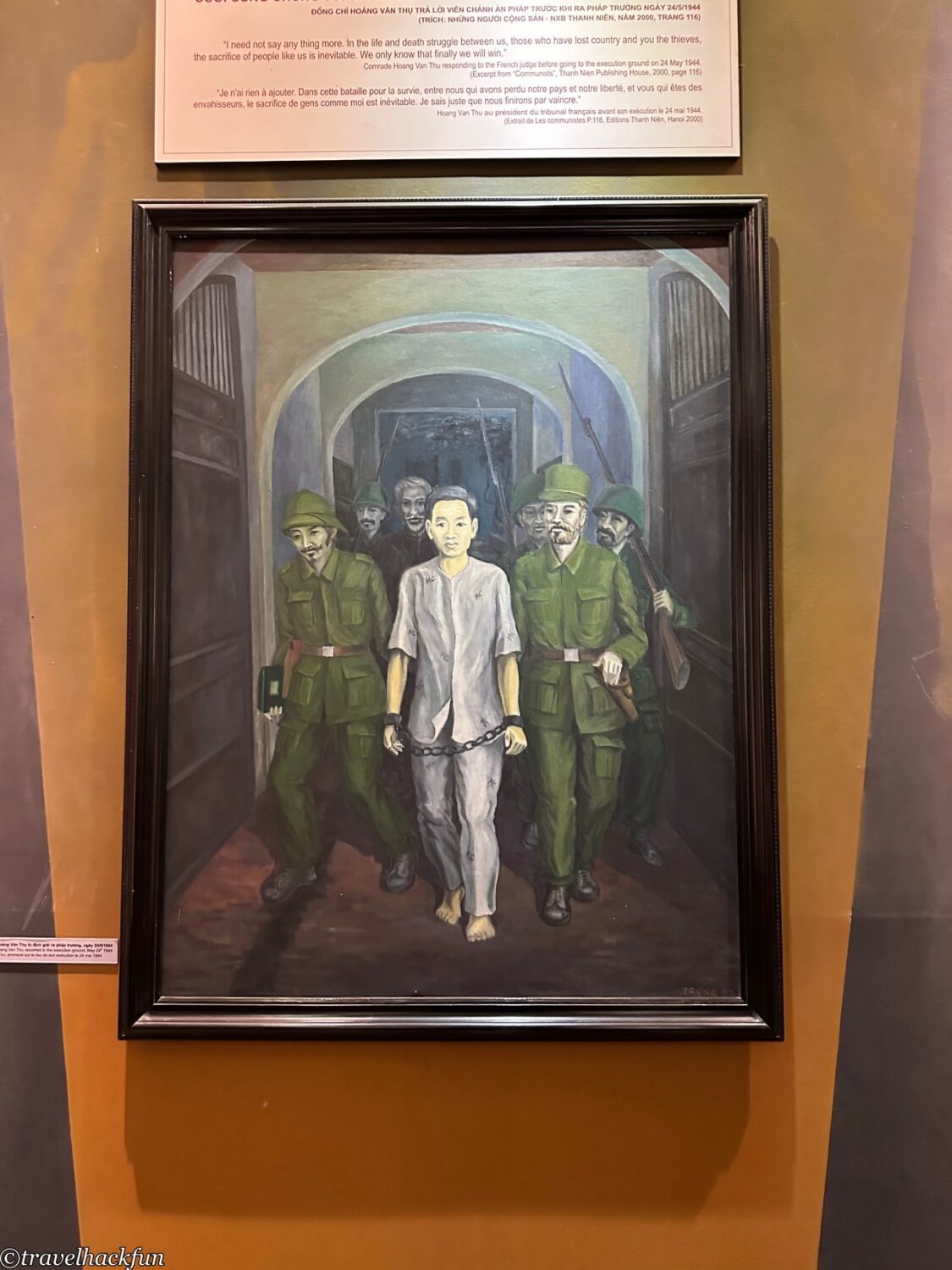

Although the prison detained a large number of Communist Party of Vietnam members and restricted their movements, the party members inside still found ways to communicate with the outside world. They conveyed messages into the prison through items delivered in baskets by visiting family members and supporters. Additionally, they communicated externally through embroidery that female prisoners were required to make, which the jailers then sold outside.


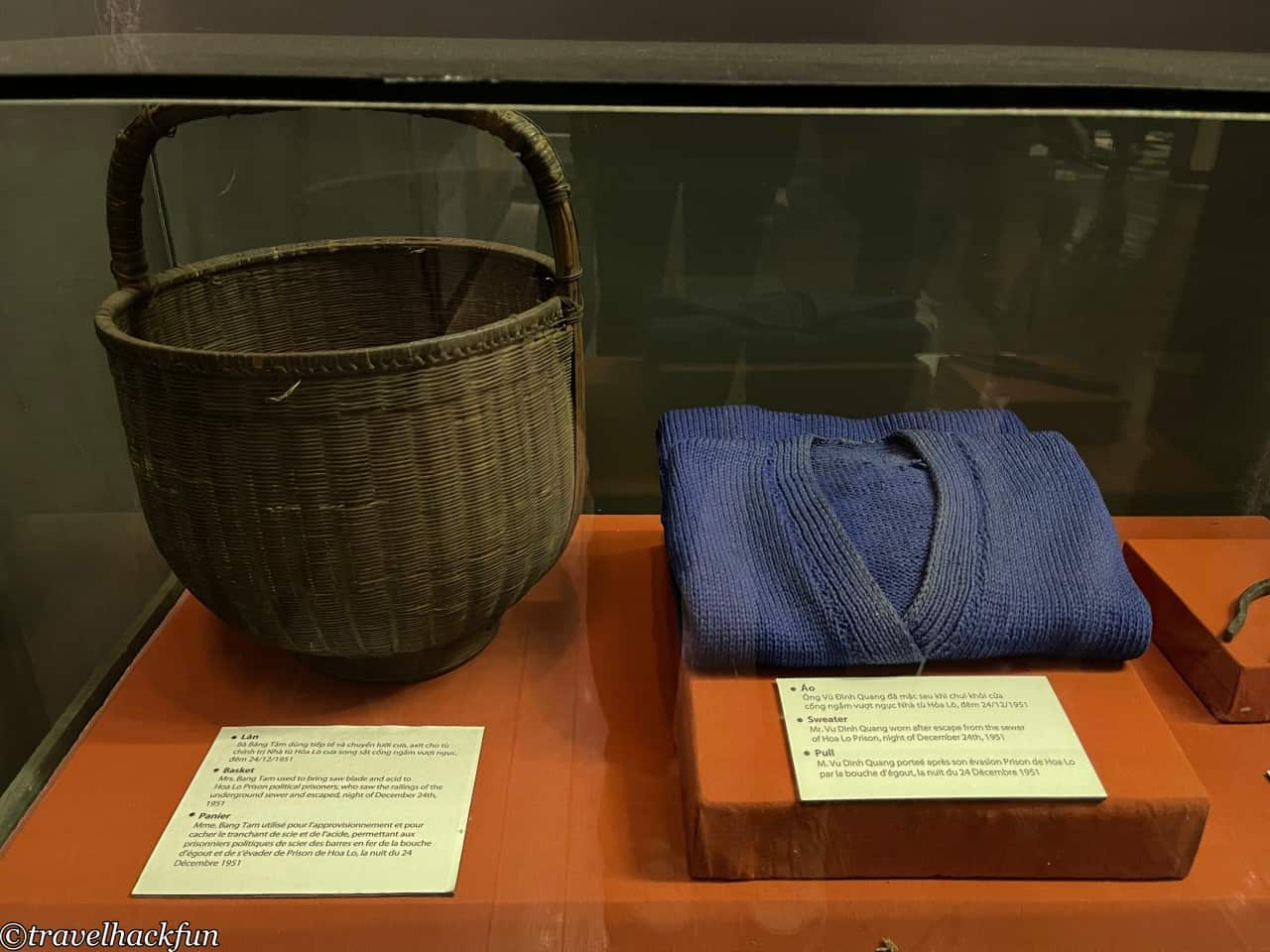

In the Hoa Lo Prison, there were two well-known escape attempts. One occurred in 1945 when political prisoners disguised themselves as regular inmates, swapped clothes, and pretended to be delivering food. They then left the prison and escaped through the sewer system. This escape involved a group of 29 individuals. The other, more famous escape, took place in 1951 among death row inmates. Due to tighter security, this escape was even more elaborate. It involved methods such as causing leg irons to rust, obtaining a duplicate of the prison door key, receiving sewer maps during visitation, and sawing through iron bars. In the end, only five individuals successfully escaped, while twelve were recaptured. In the courtyard behind the first prison block, you can still see the iron bars that were sawed open and part of the sewer system used during that time.
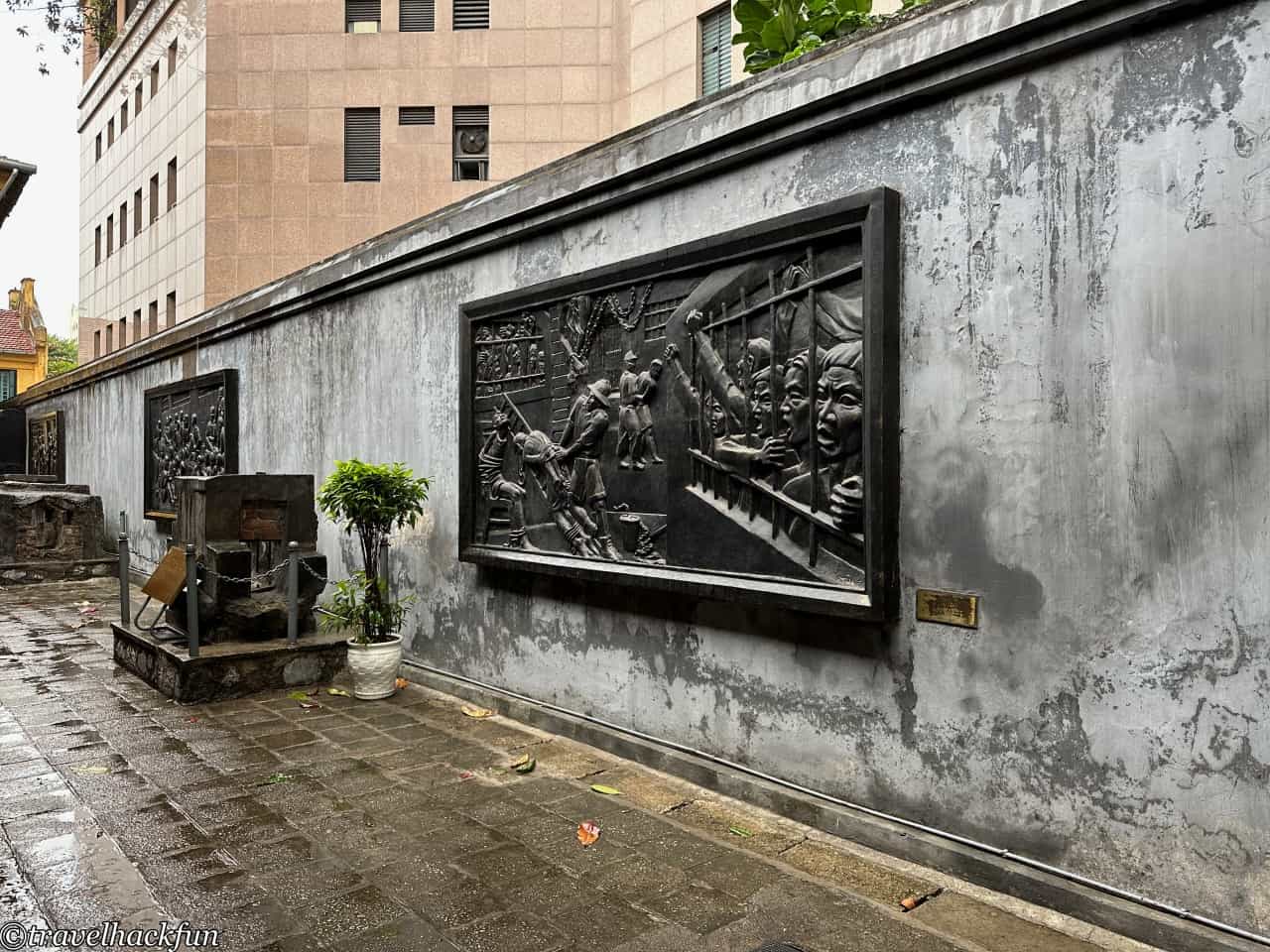
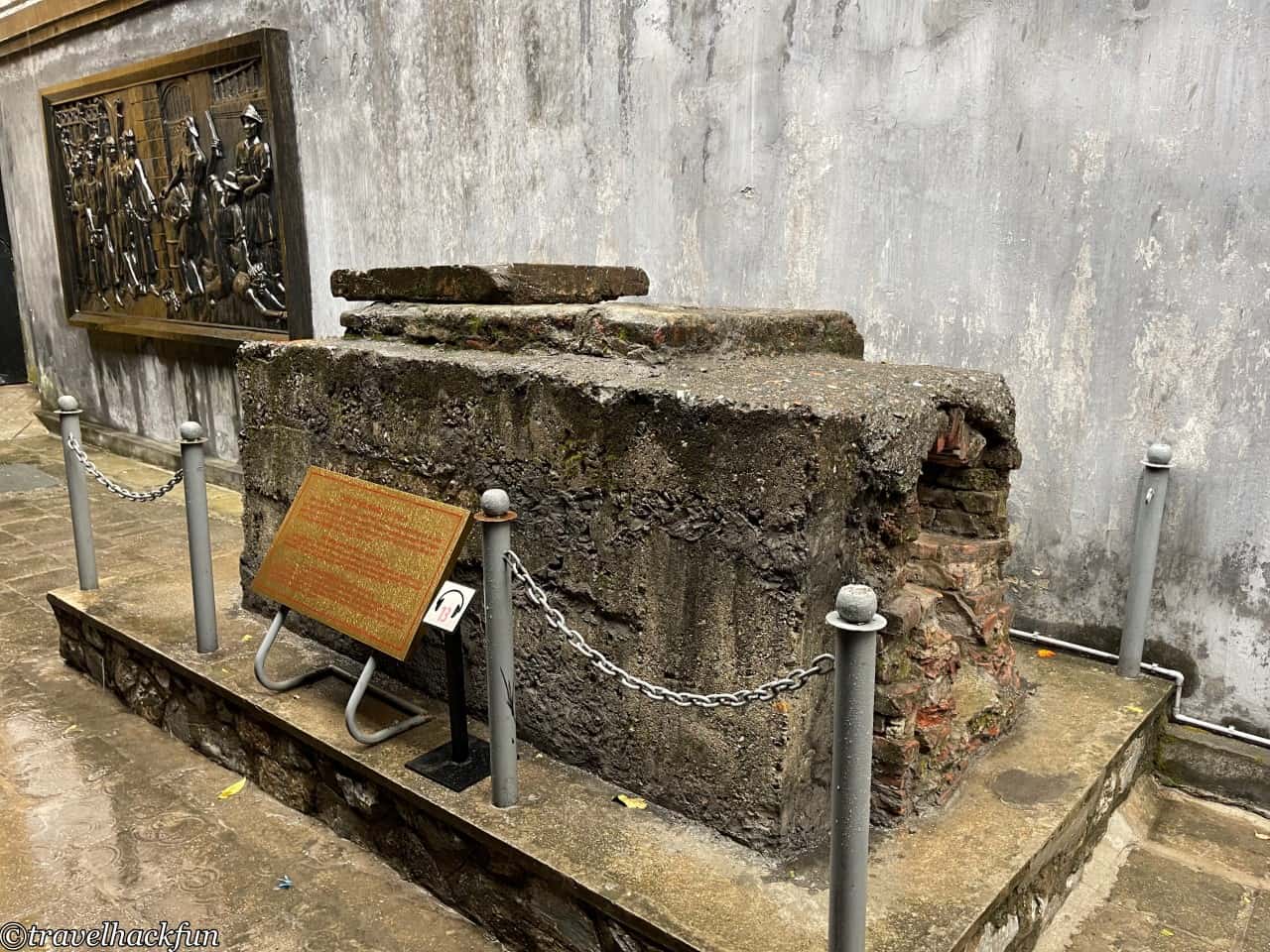

The precise planning and unwavering courage of the revolutionaries at that time shocked Vietnamese society and sparked even more anti-colonial sentiments. Now, in the outdoor courtyard, where the guillotine used to stand, there is also a monument erected. It is inscribed in Vietnamese, honoring the unwavering loyalty and determination of the revolutionary martyrs who remained steadfast even in the face of adversity.
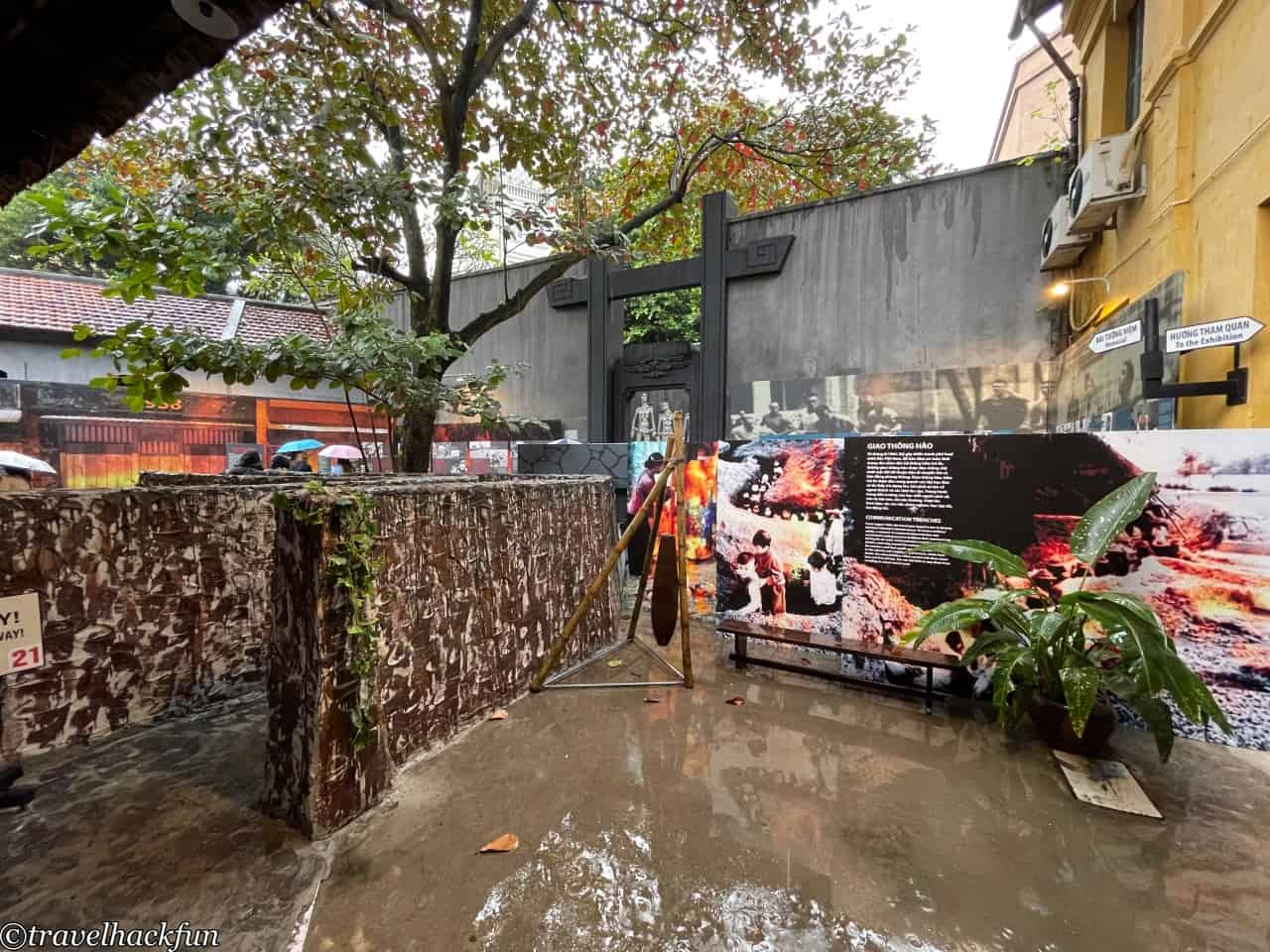
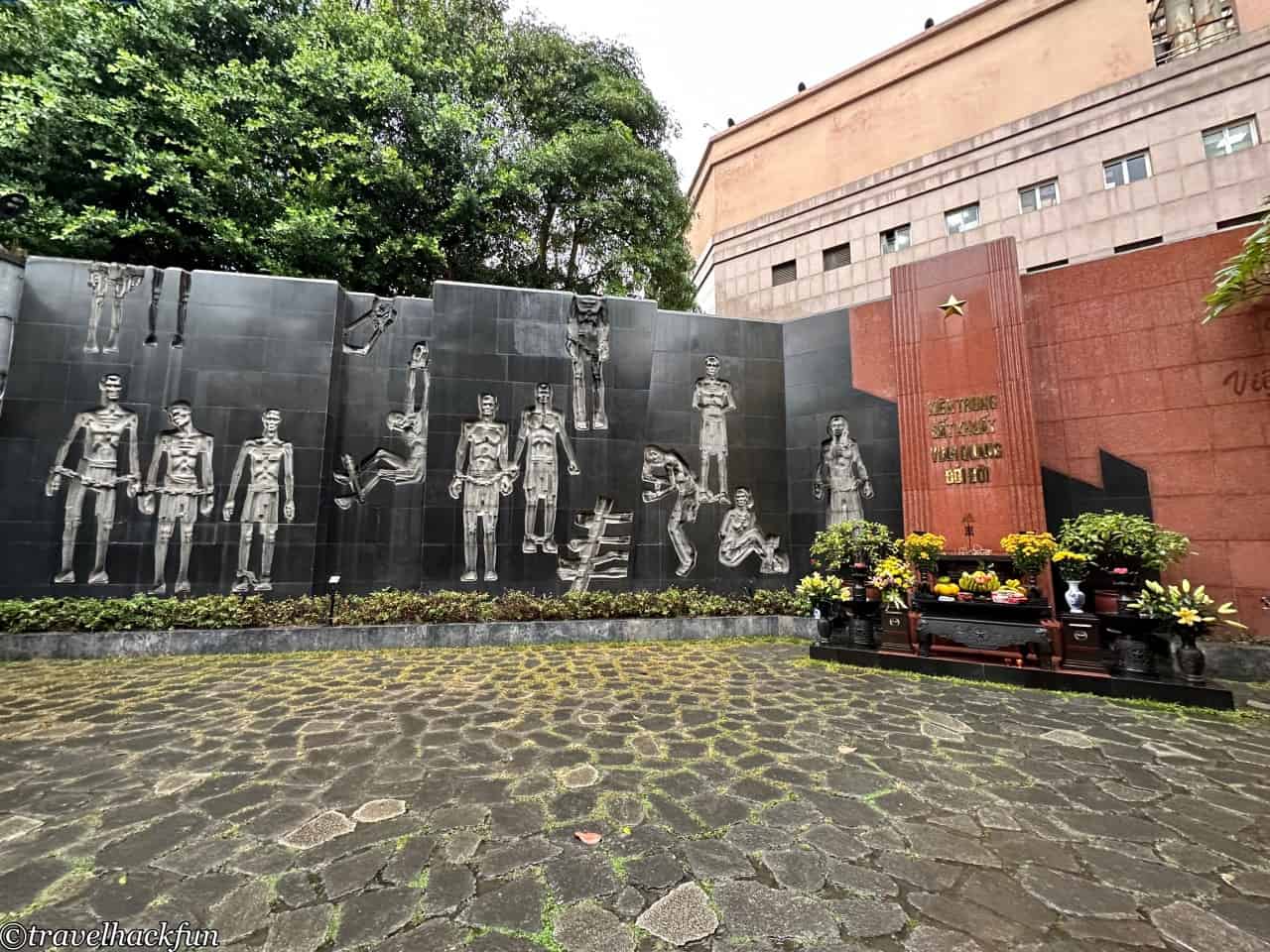
- Hotel search: Agoda
- Activities & tickets: KKday / Klook / TripAdvisor
- Travel credit cards (US only): My card picks + beginner tips
☕ Enjoying my travel notes?
You can Buy me a coffee to support what I do 🙌